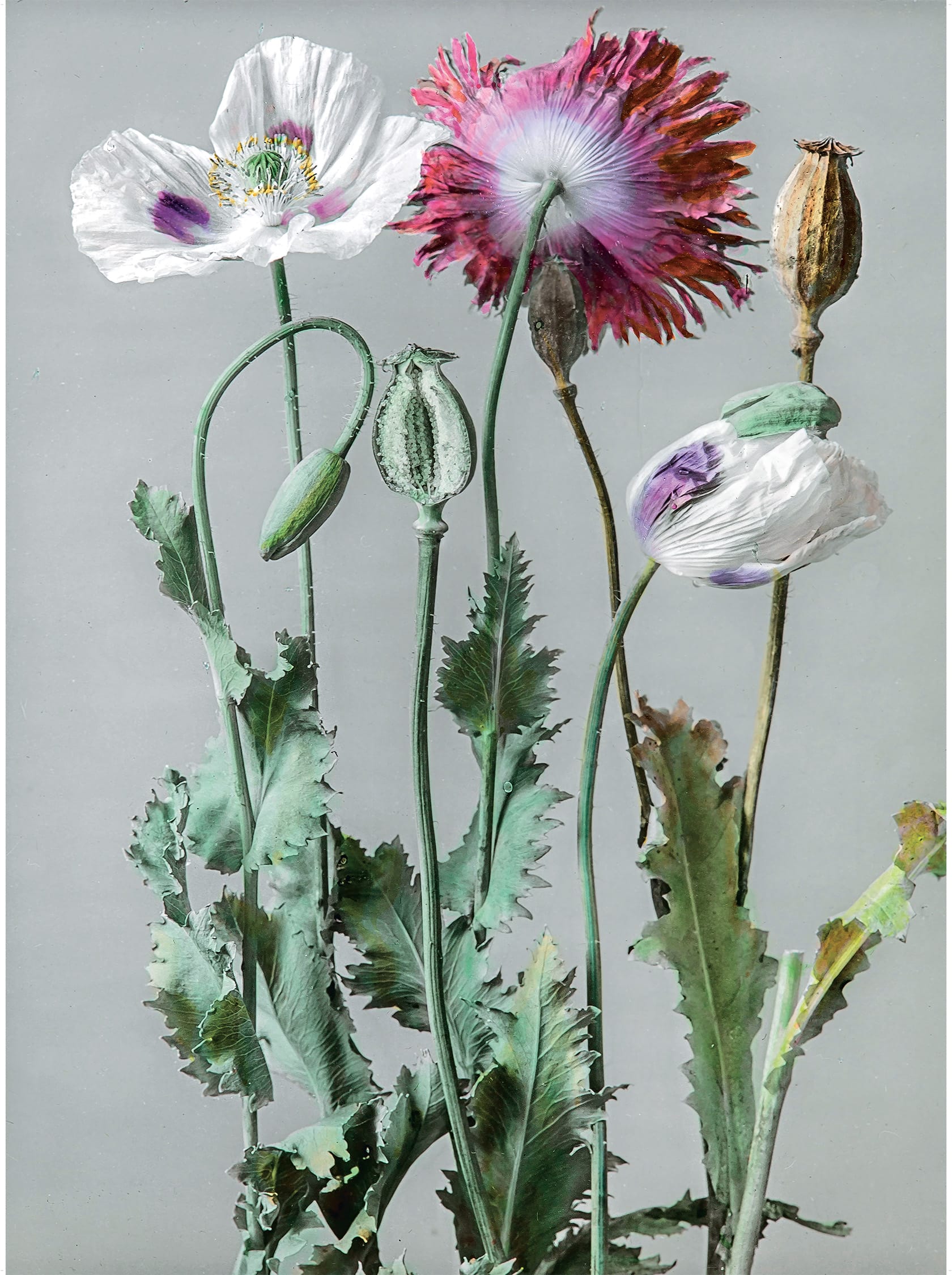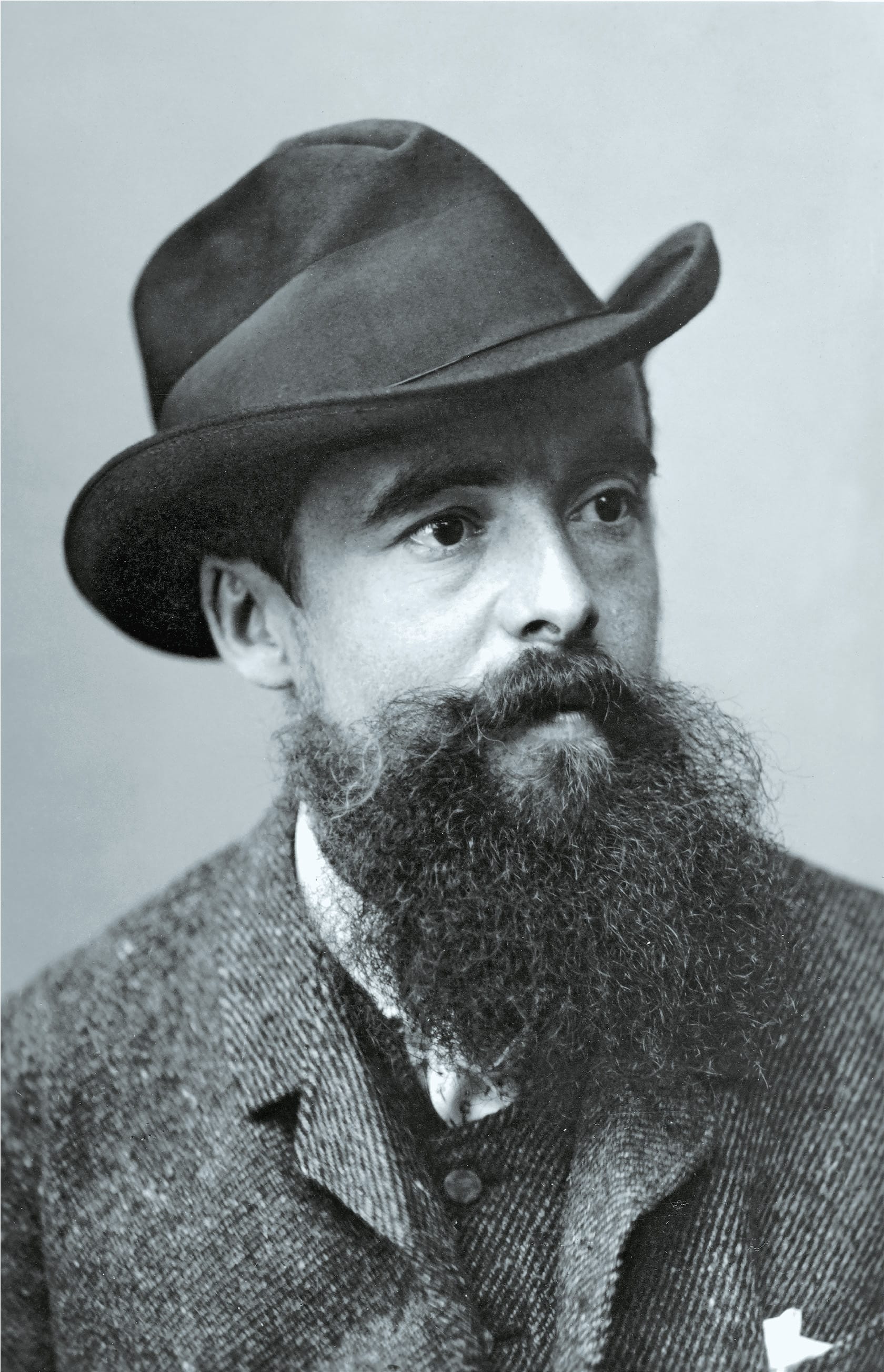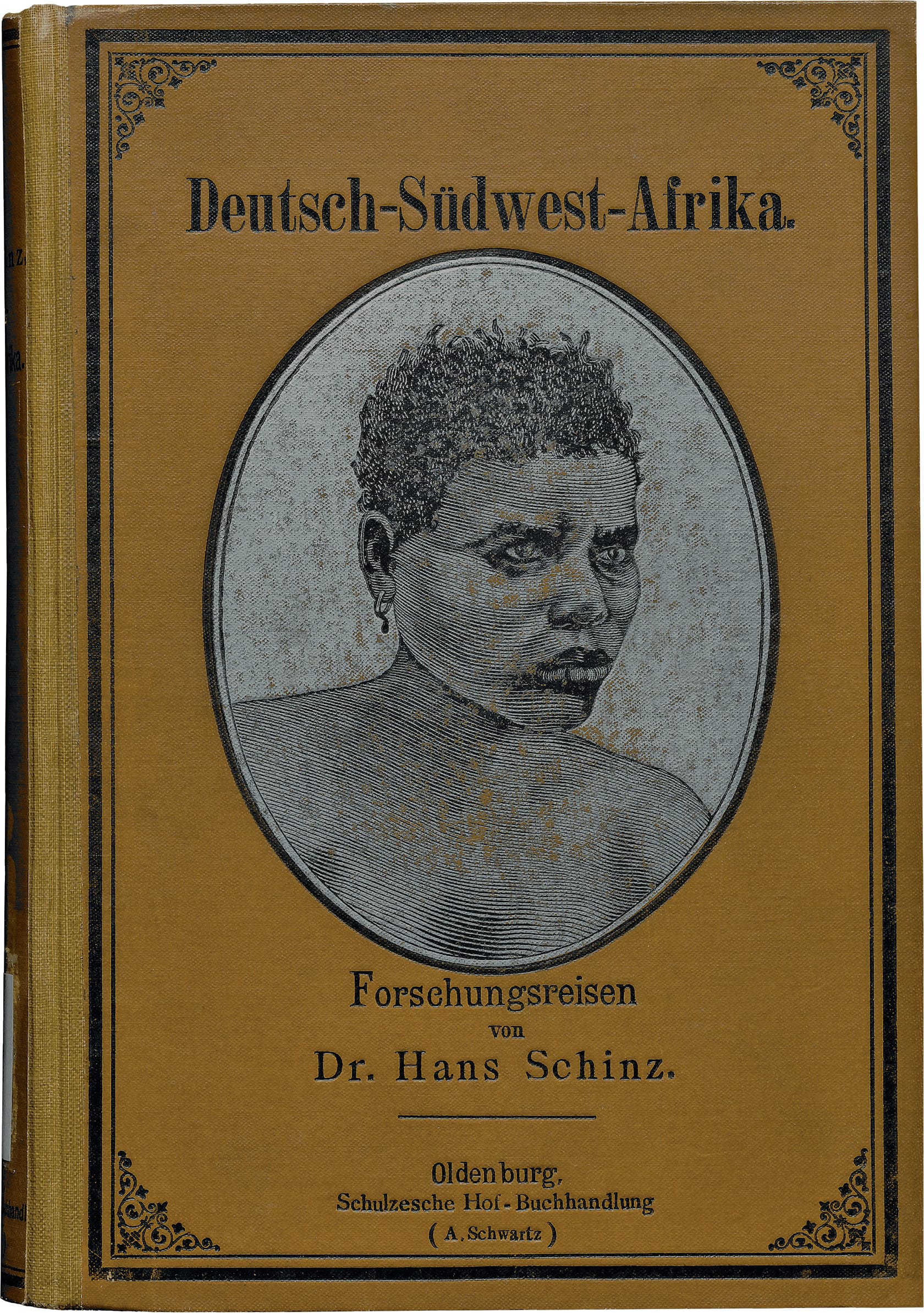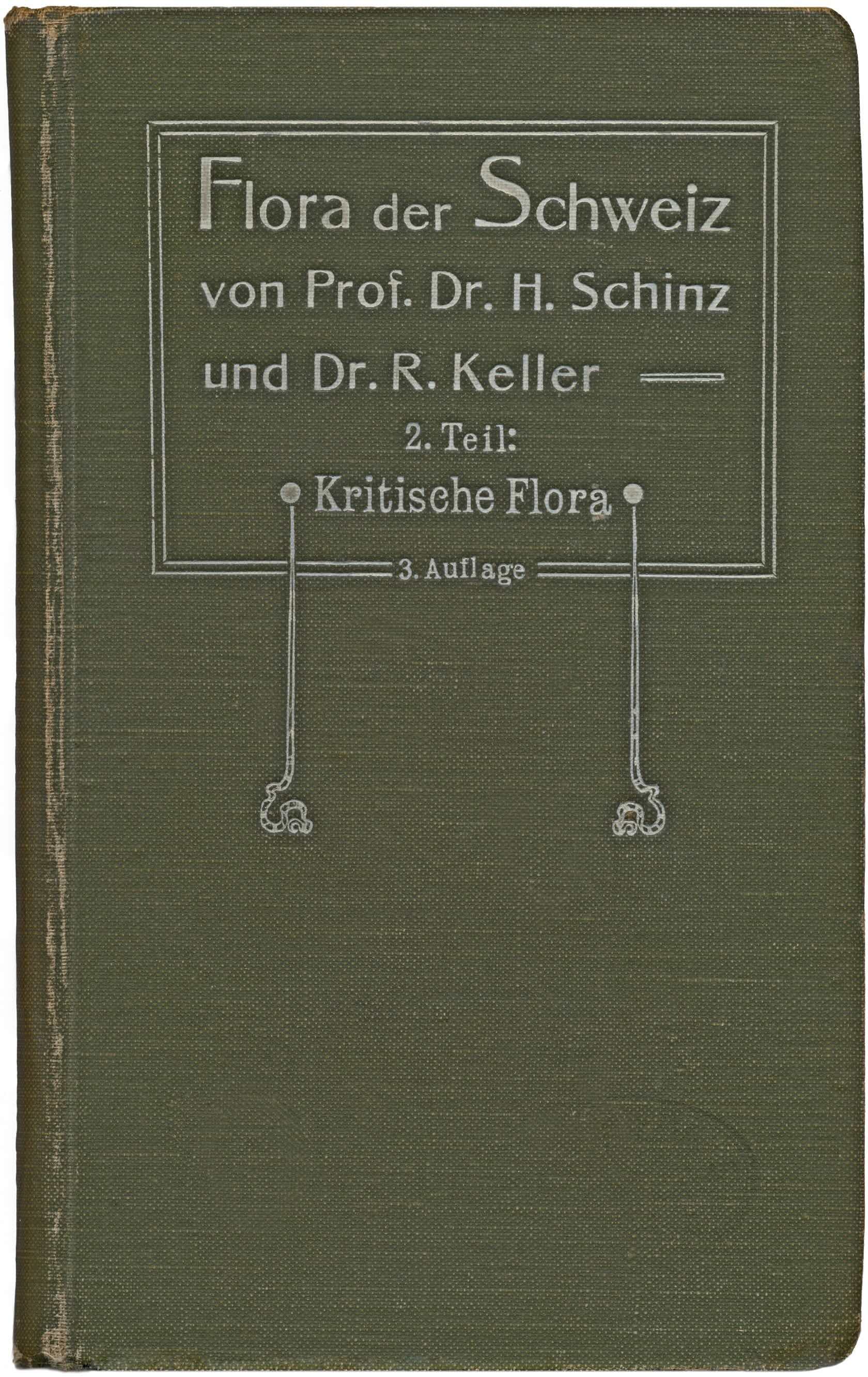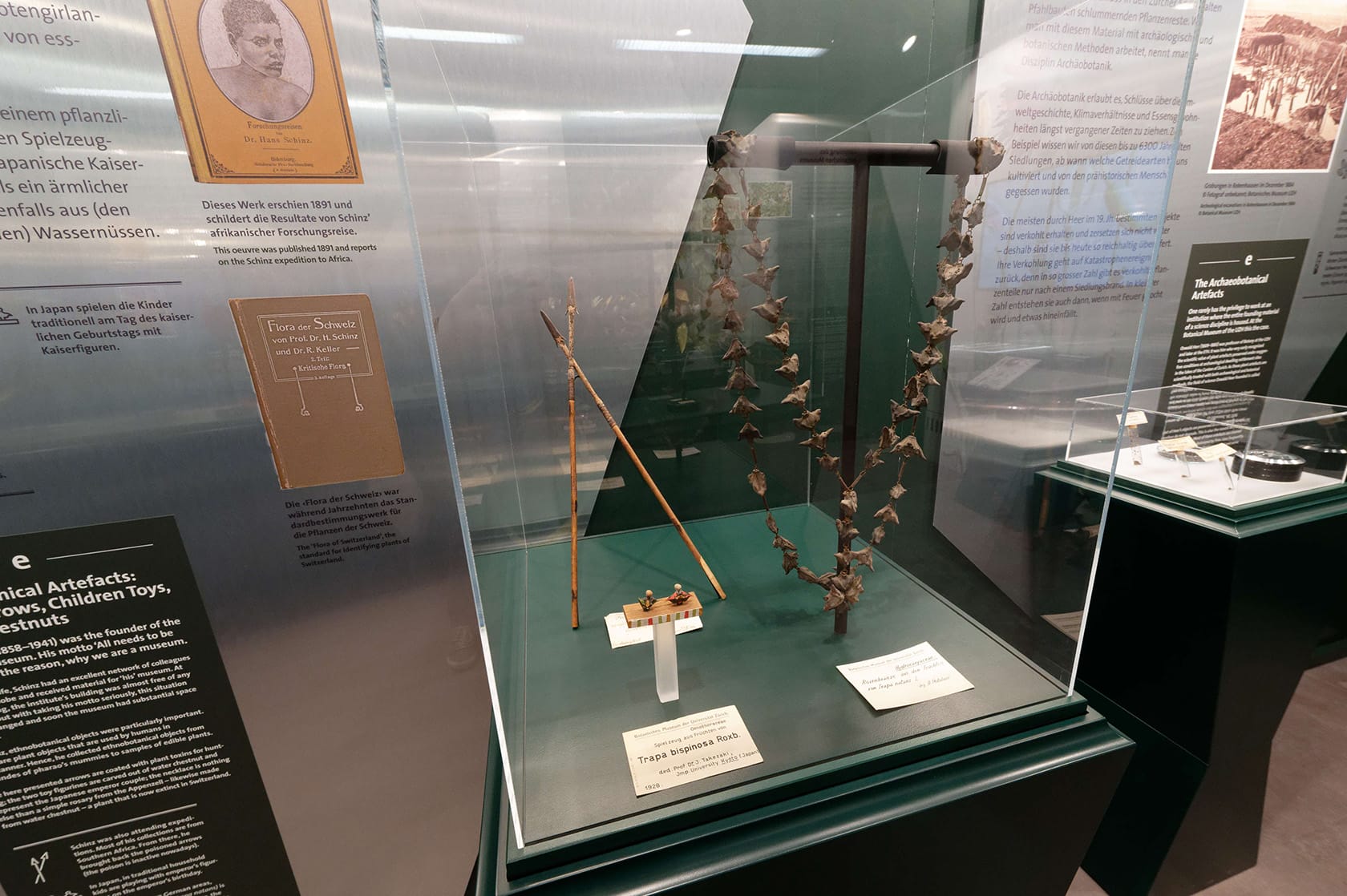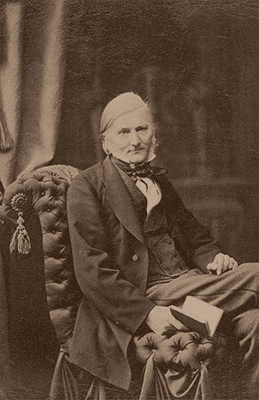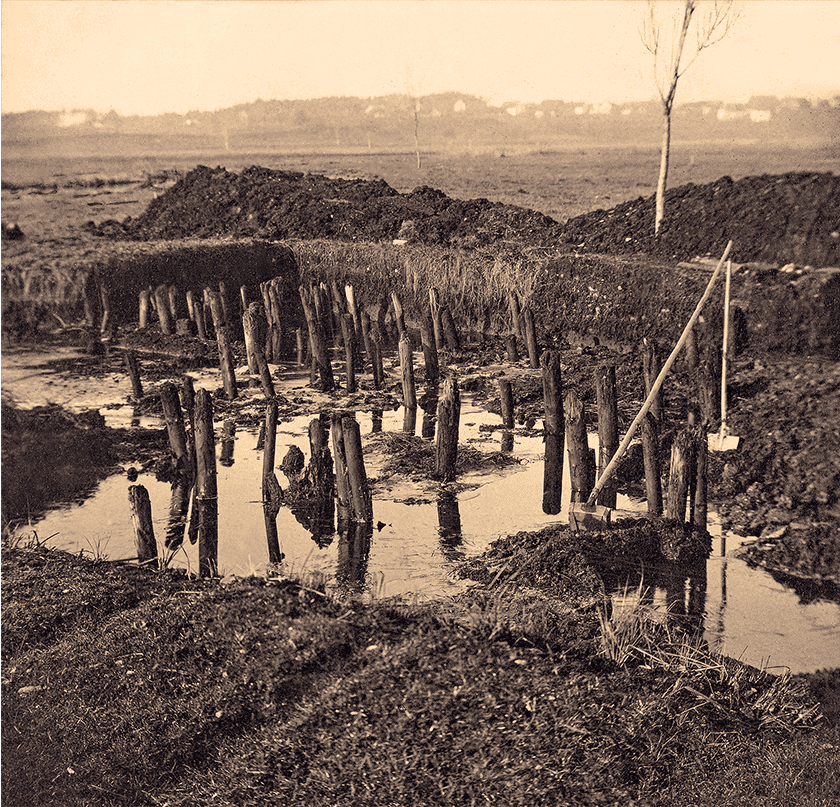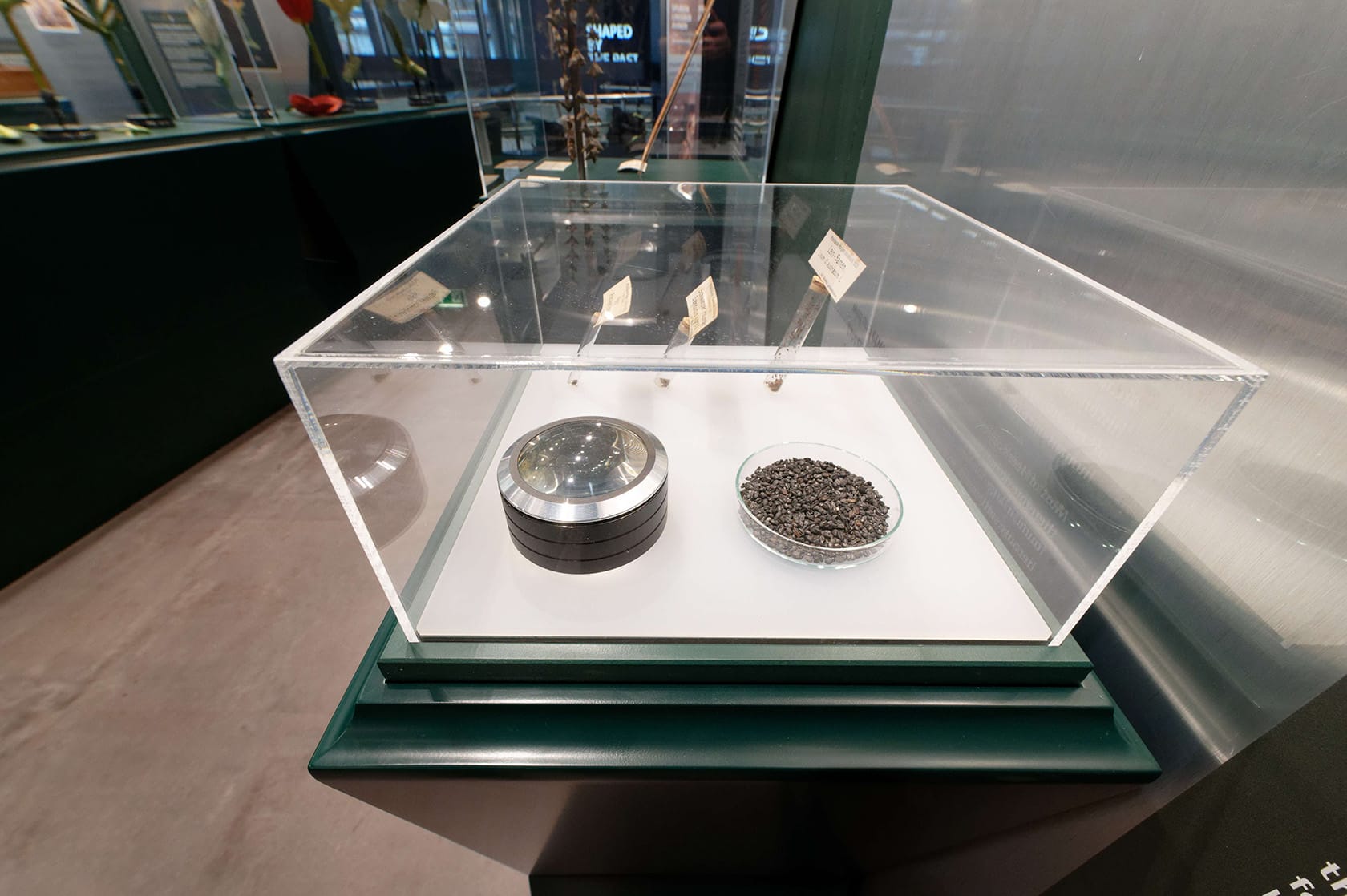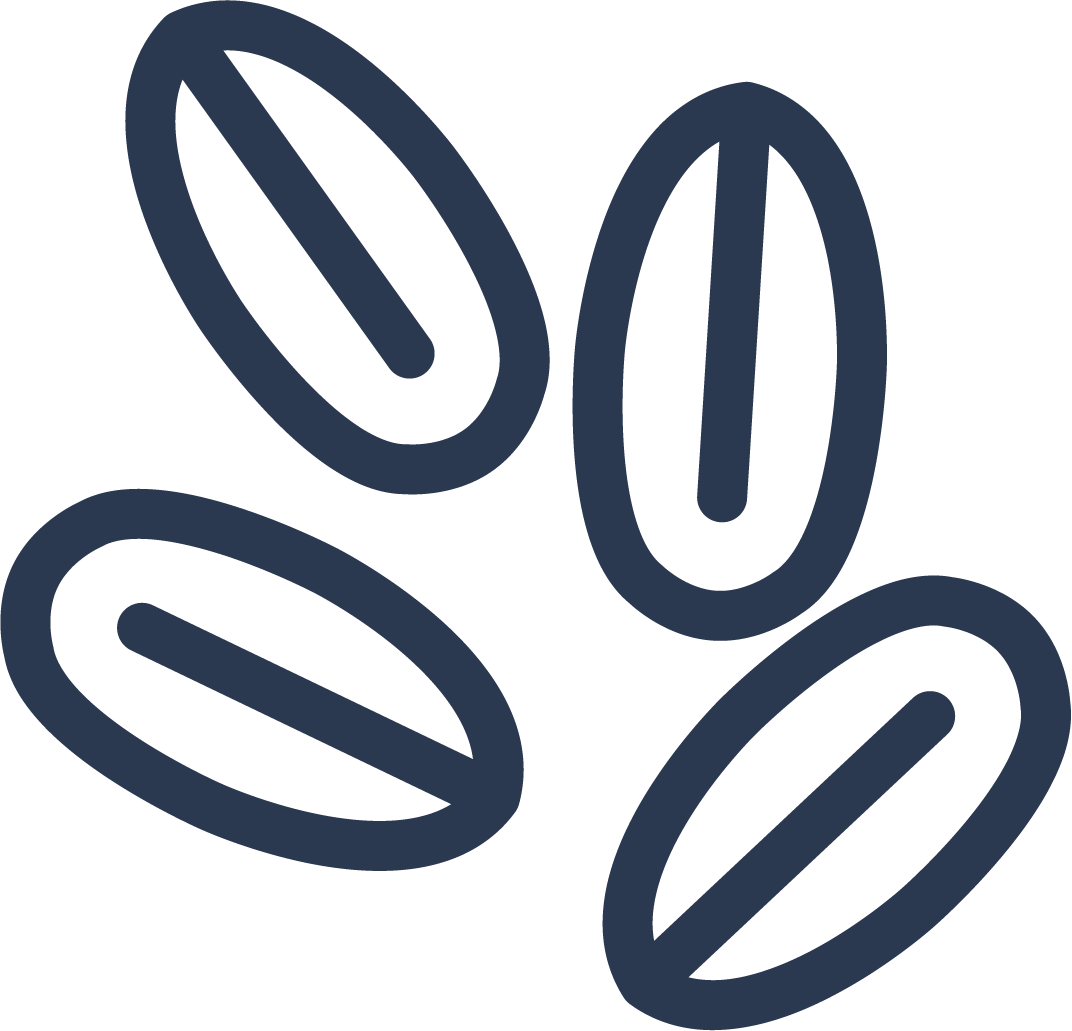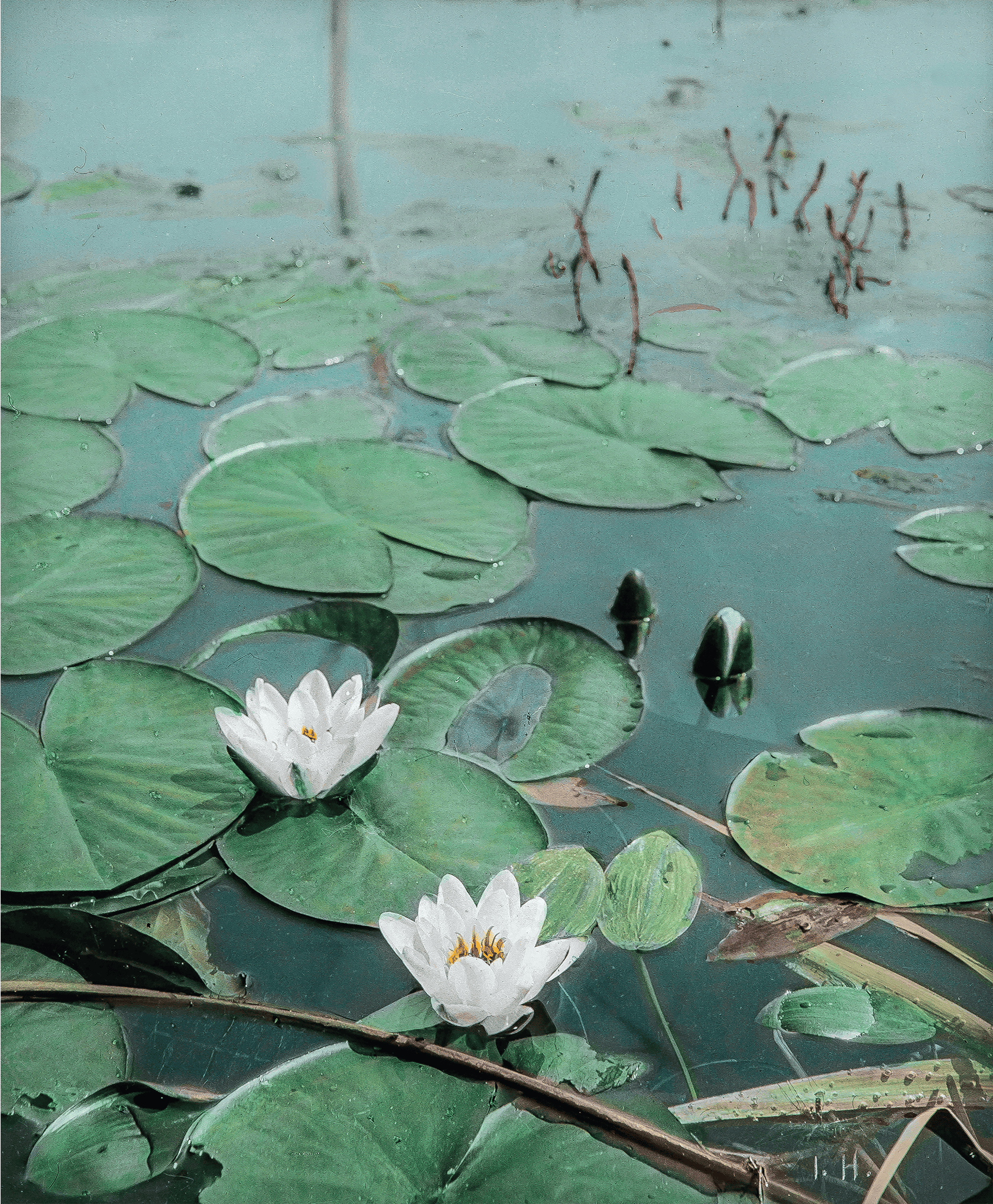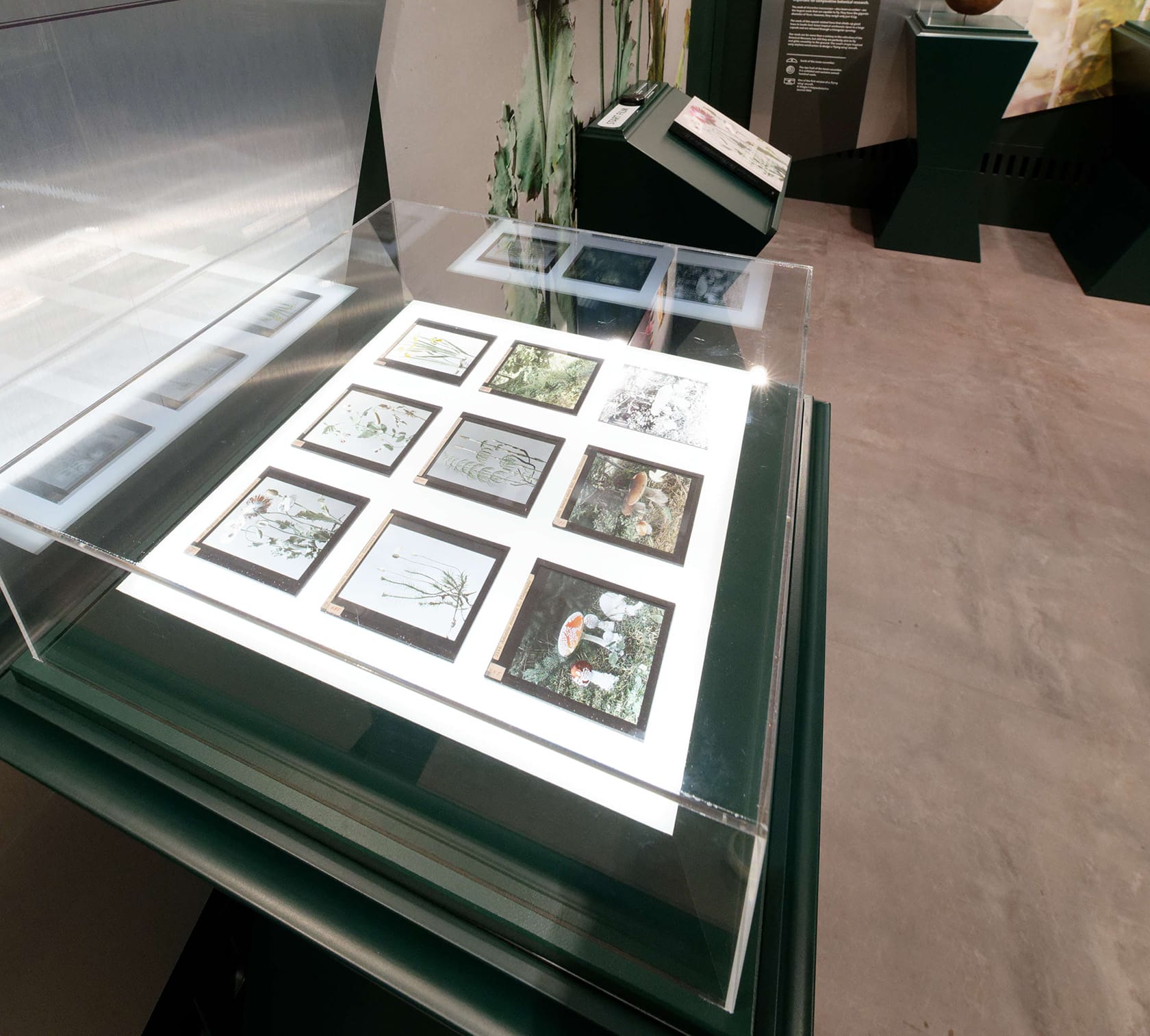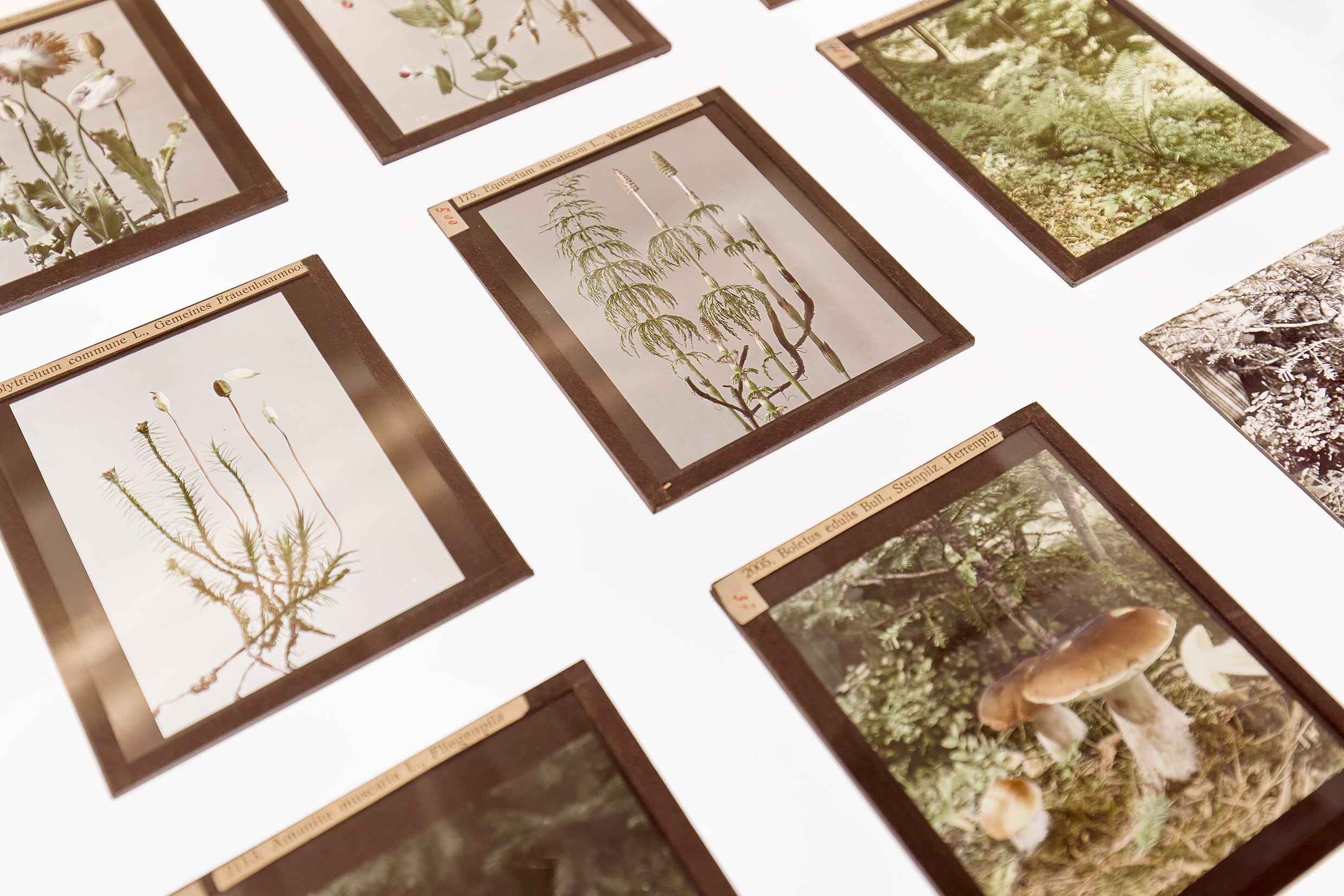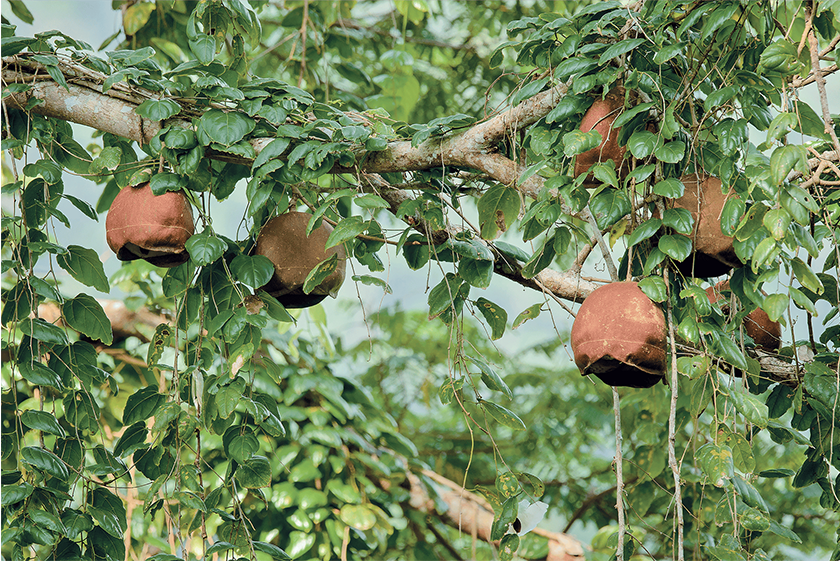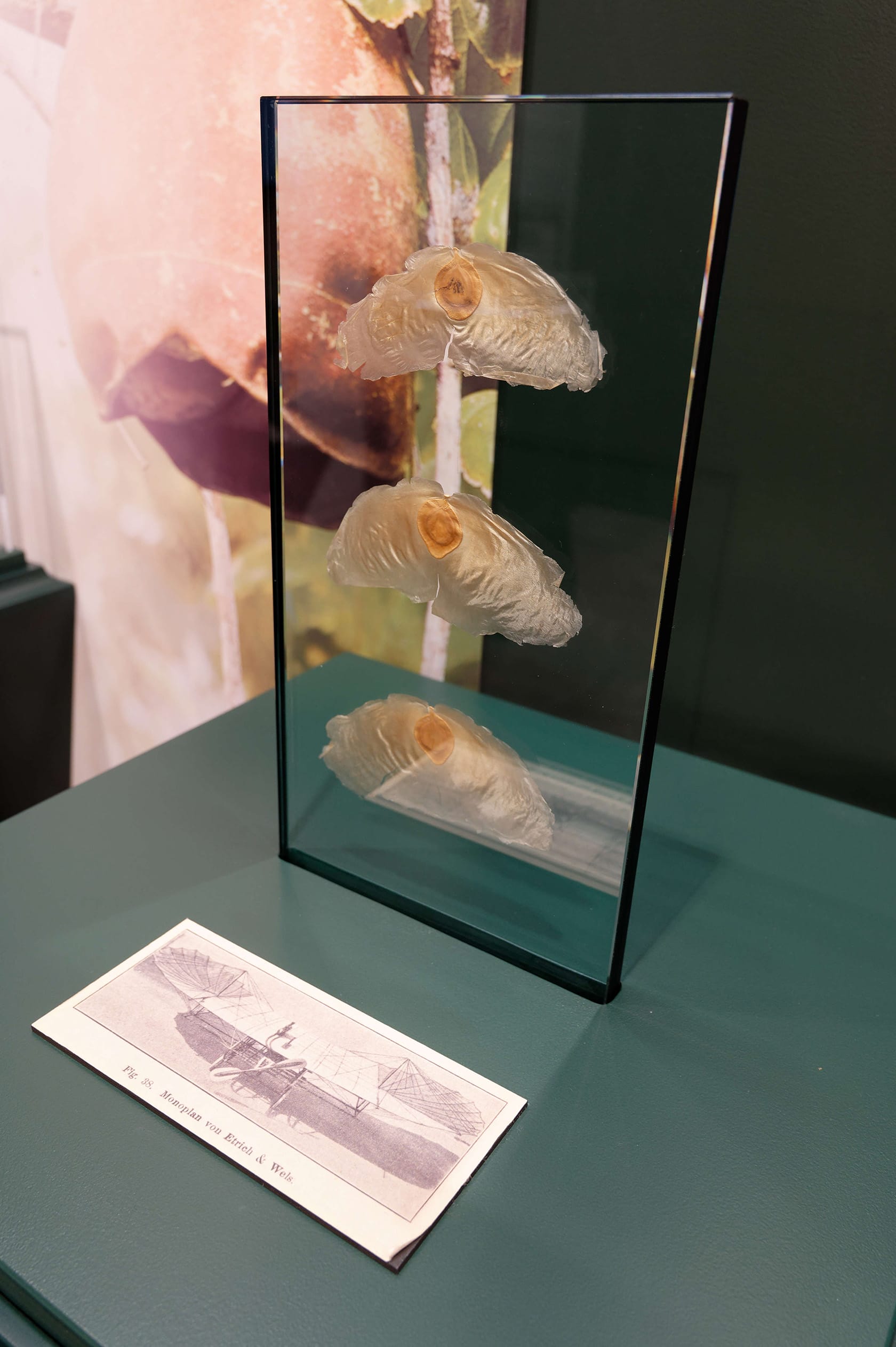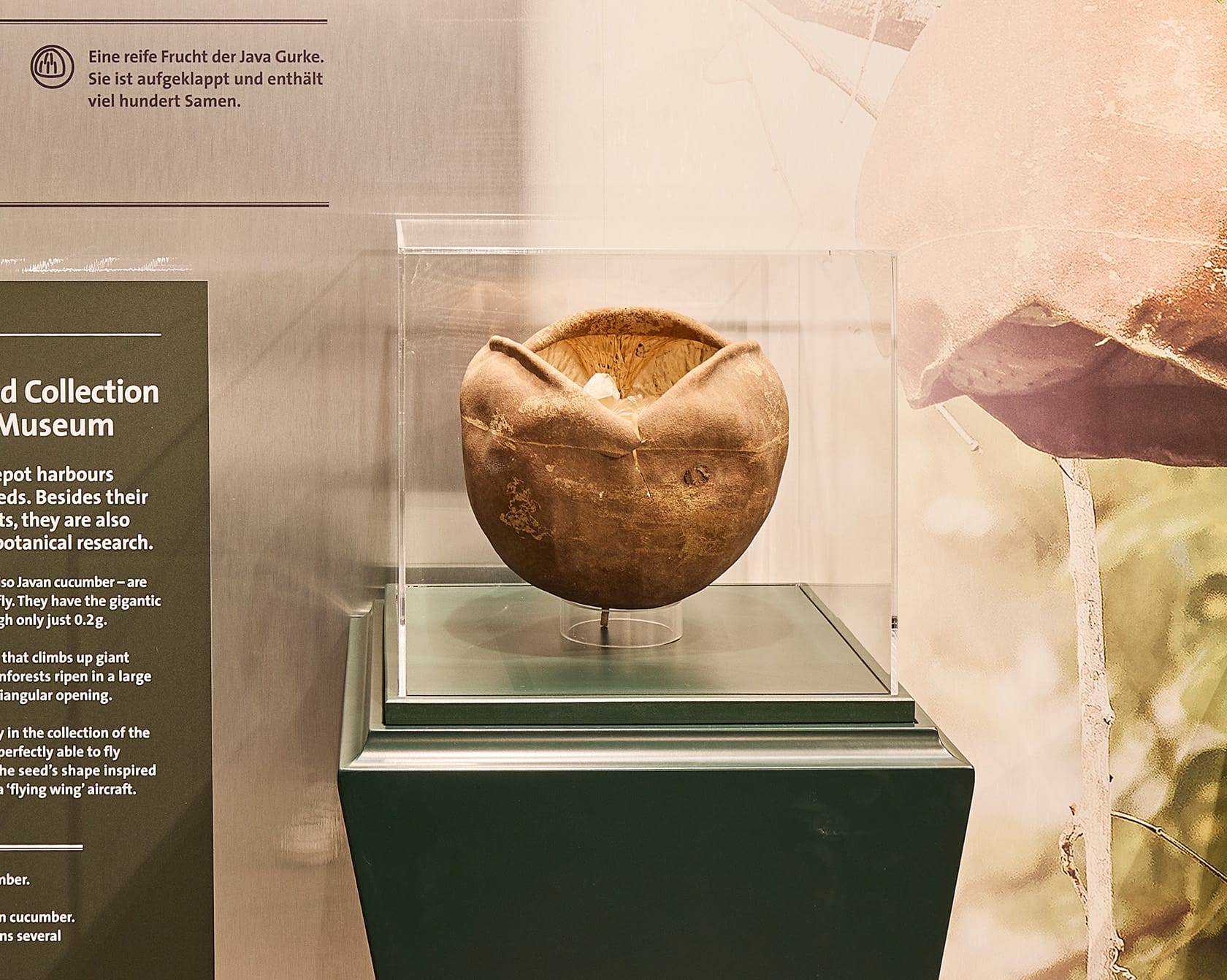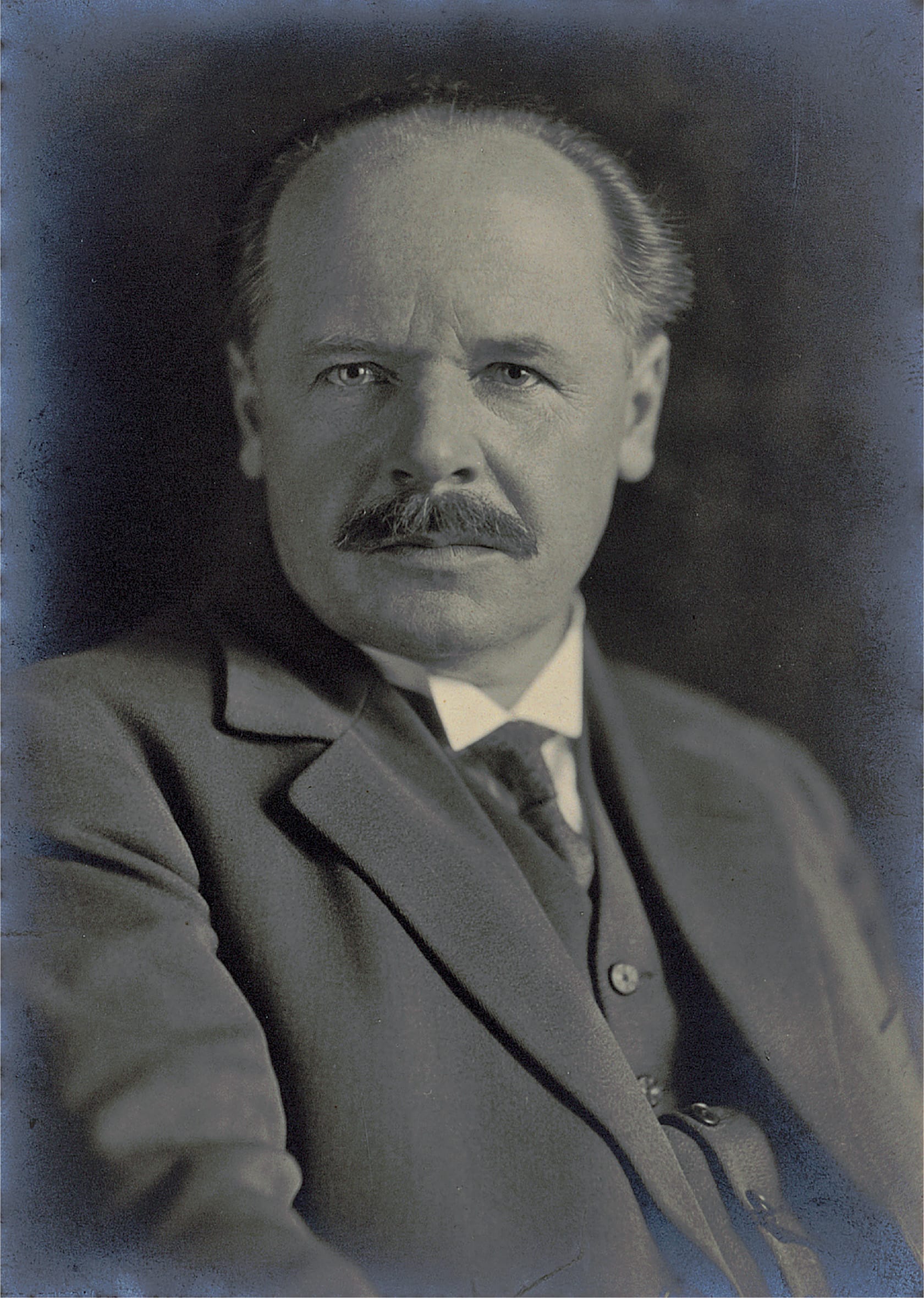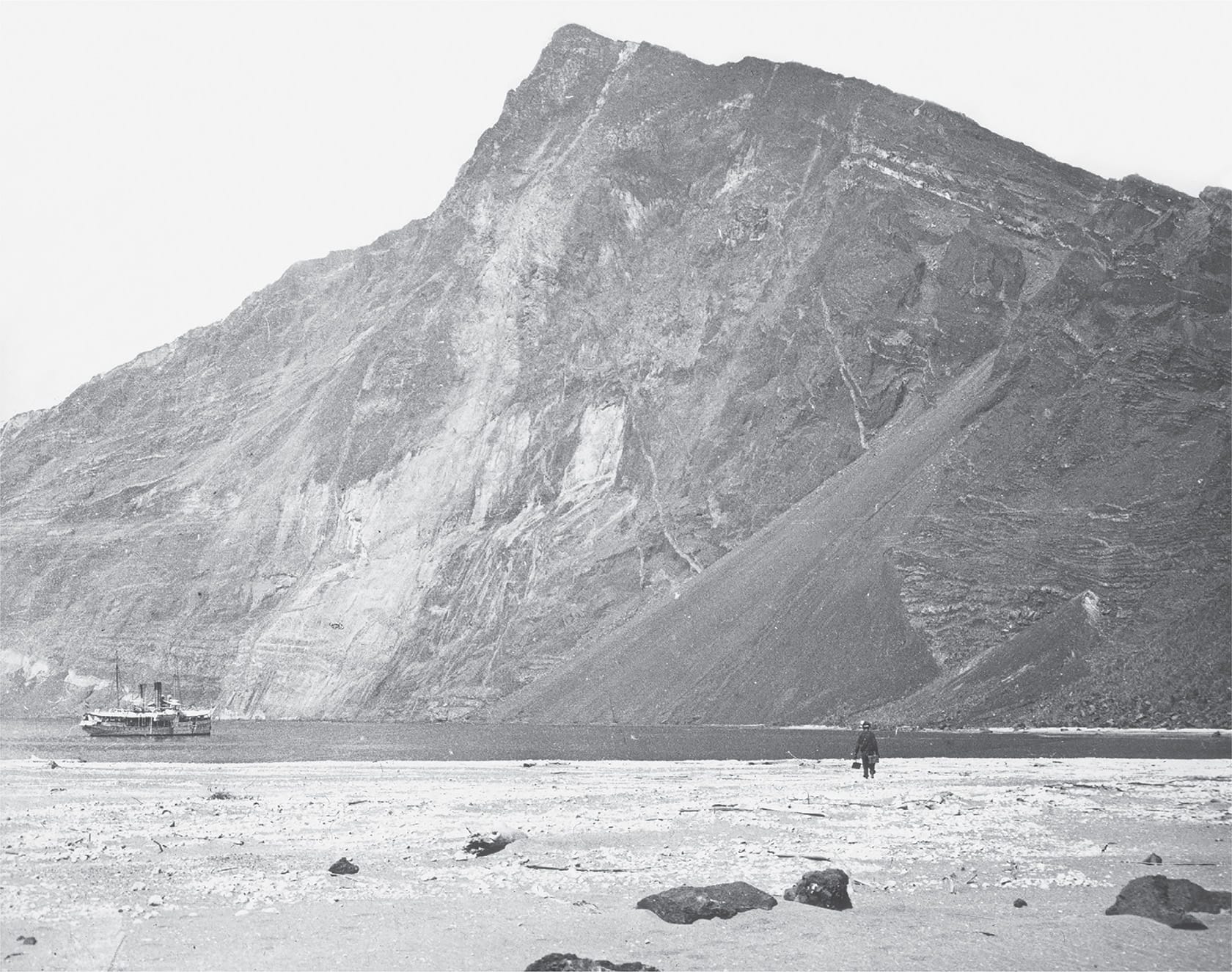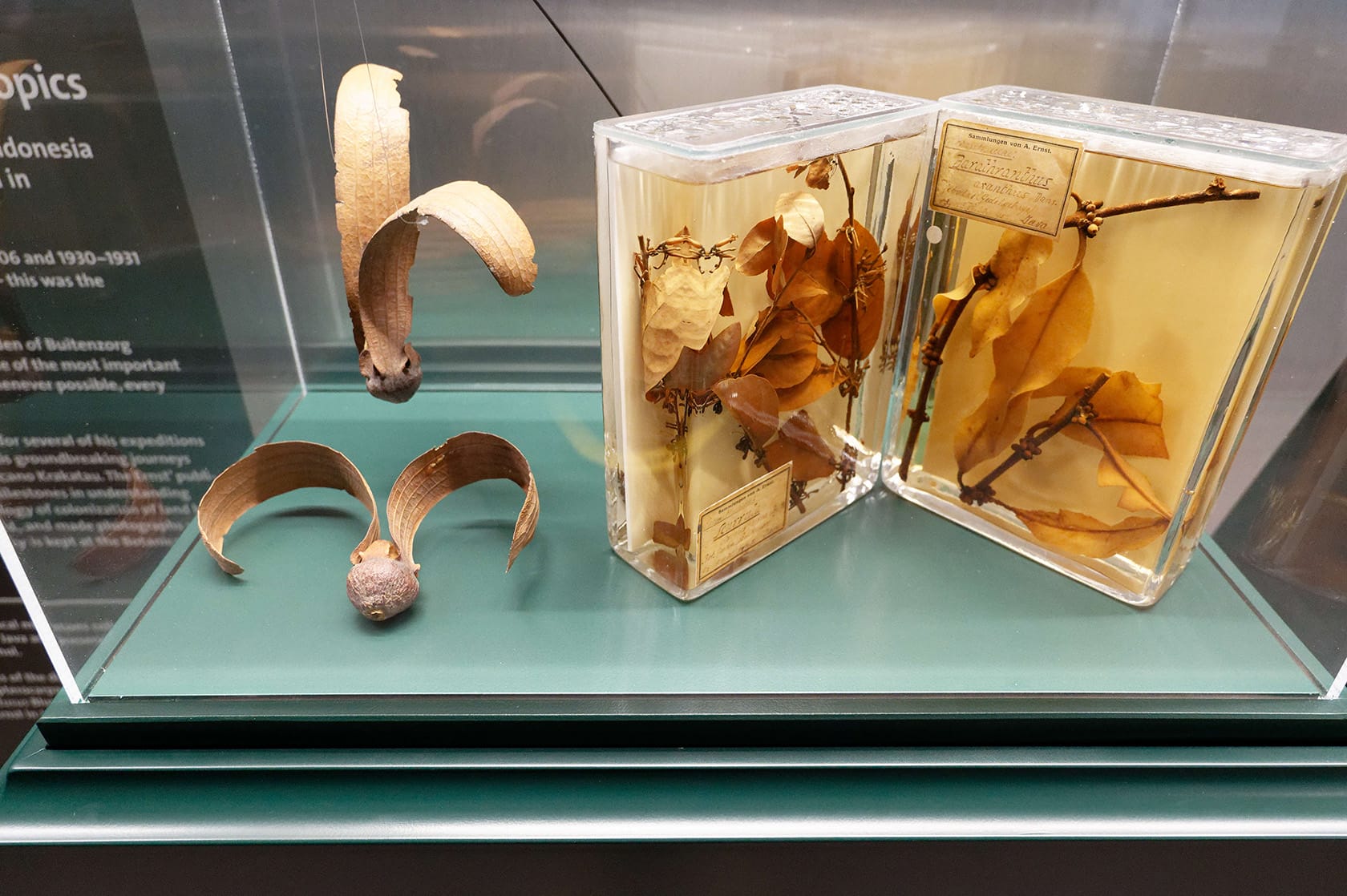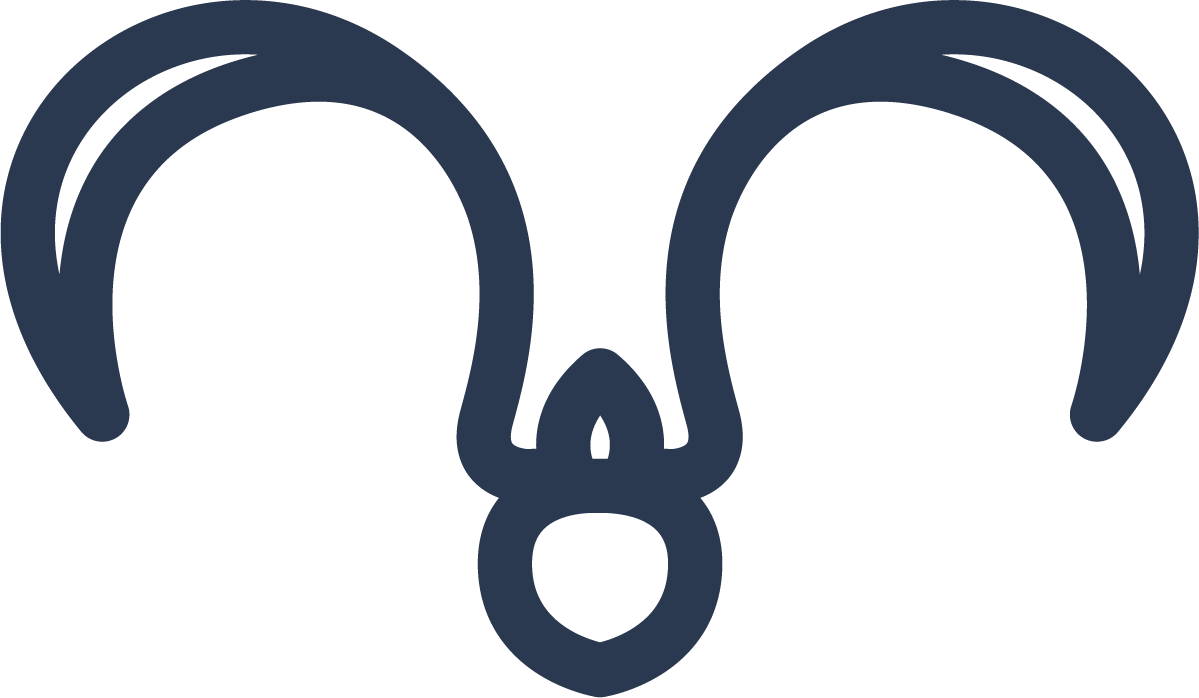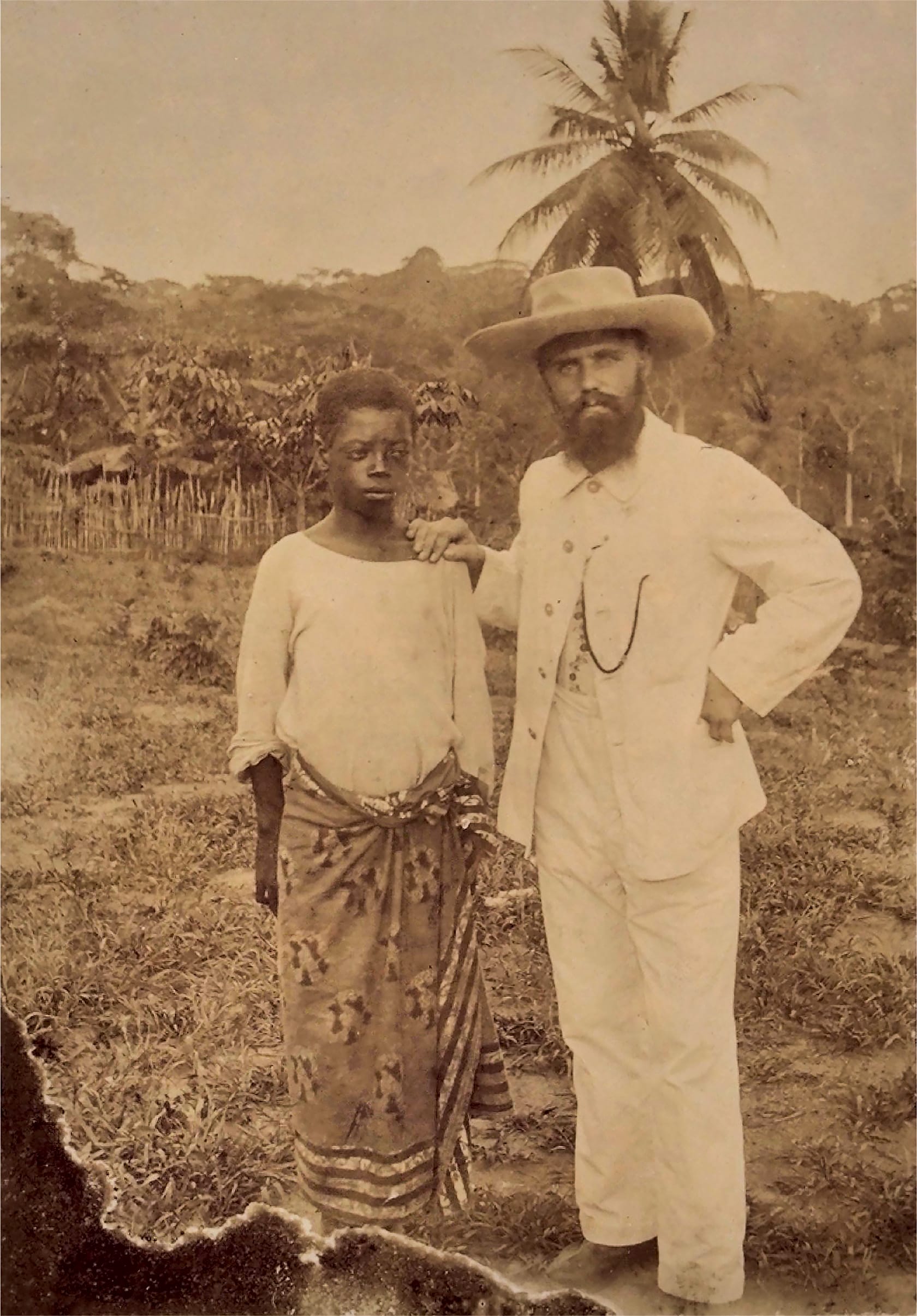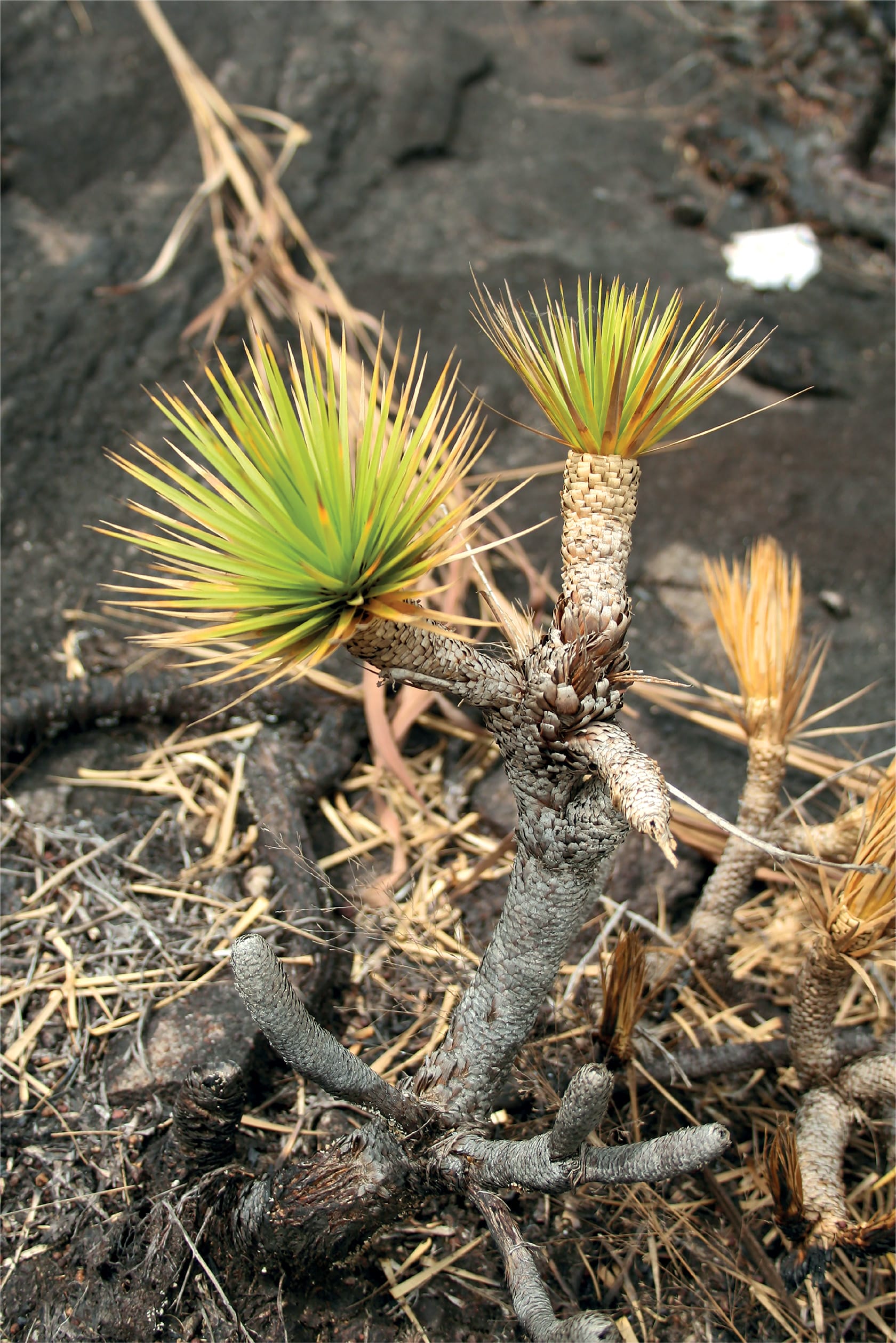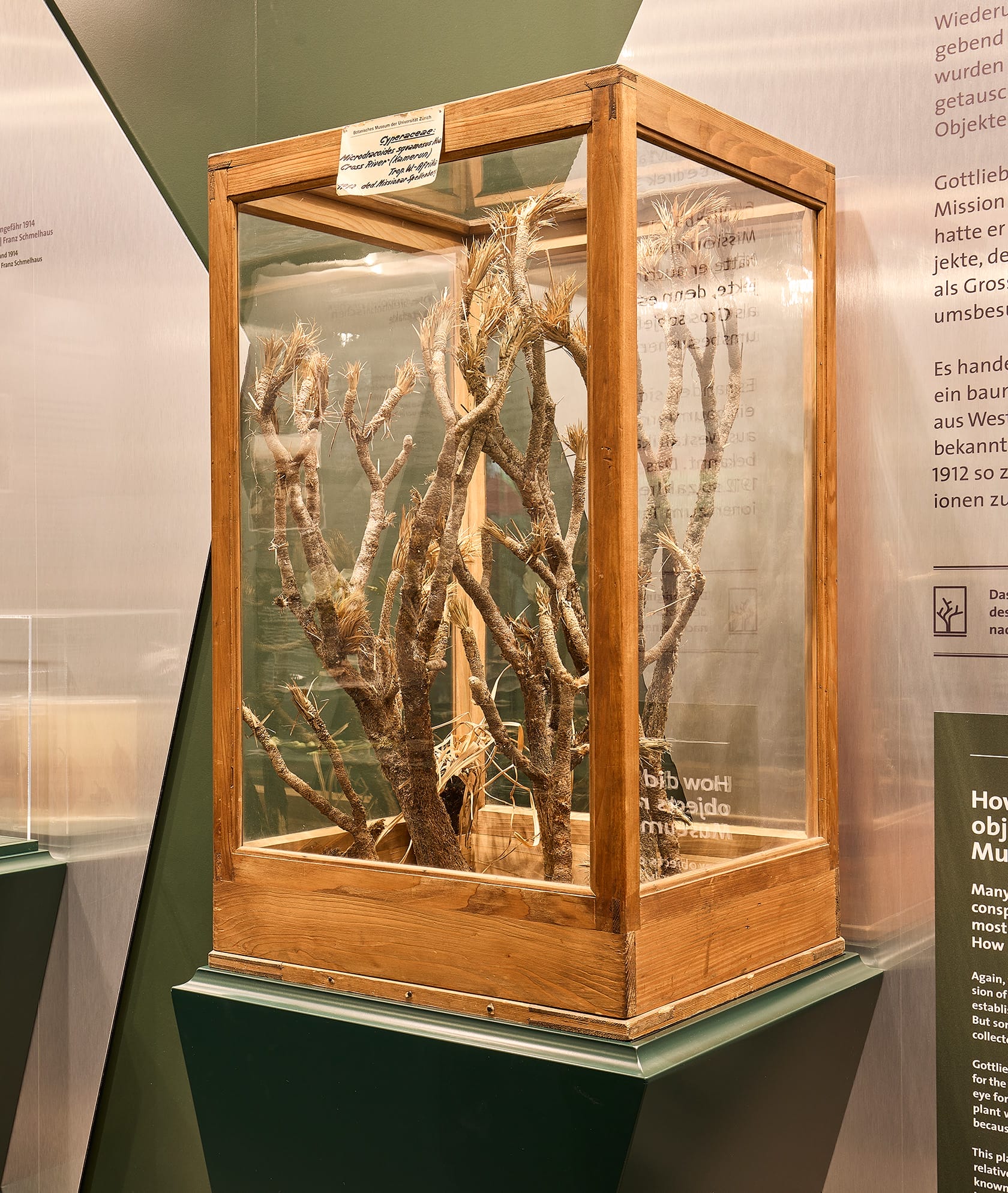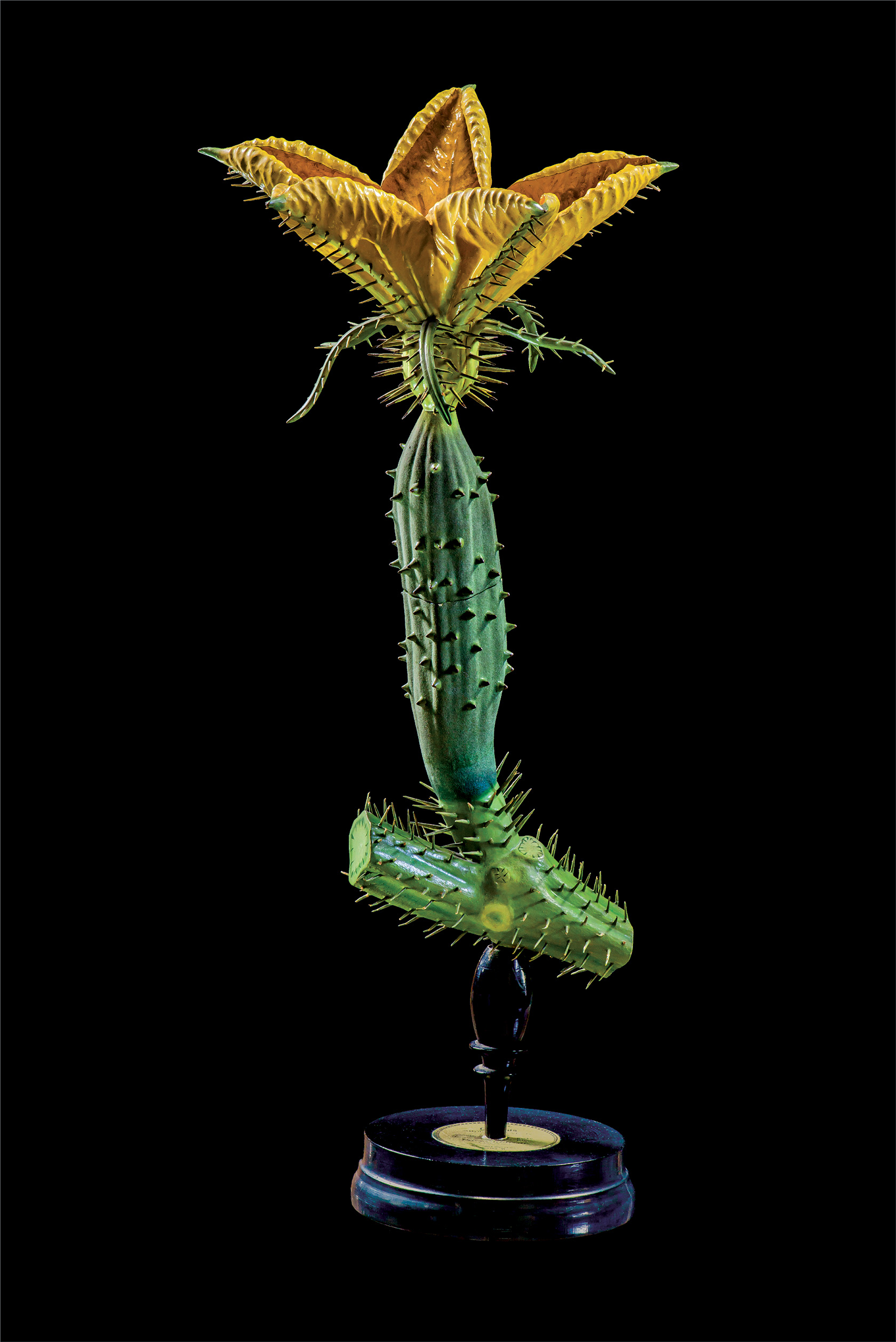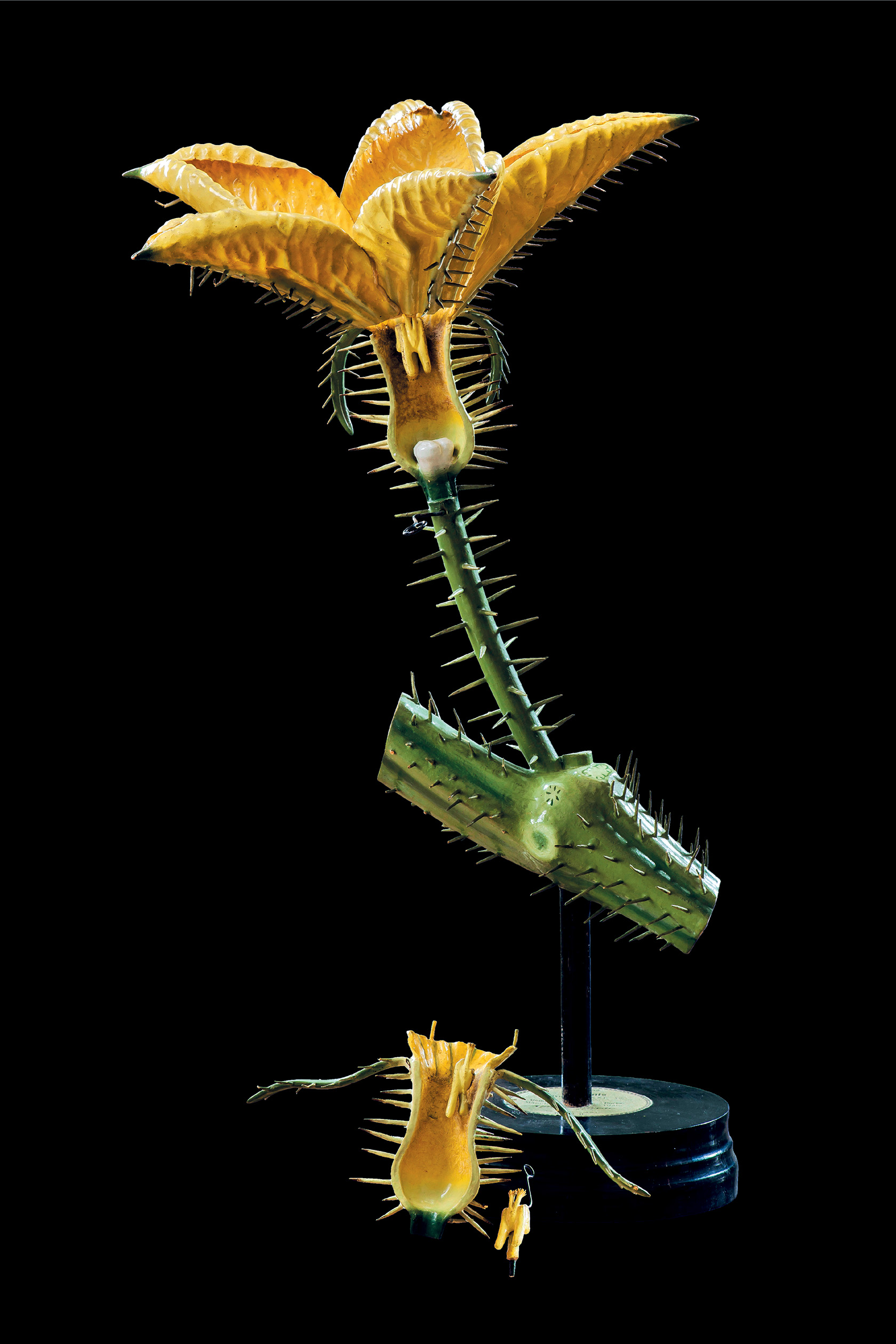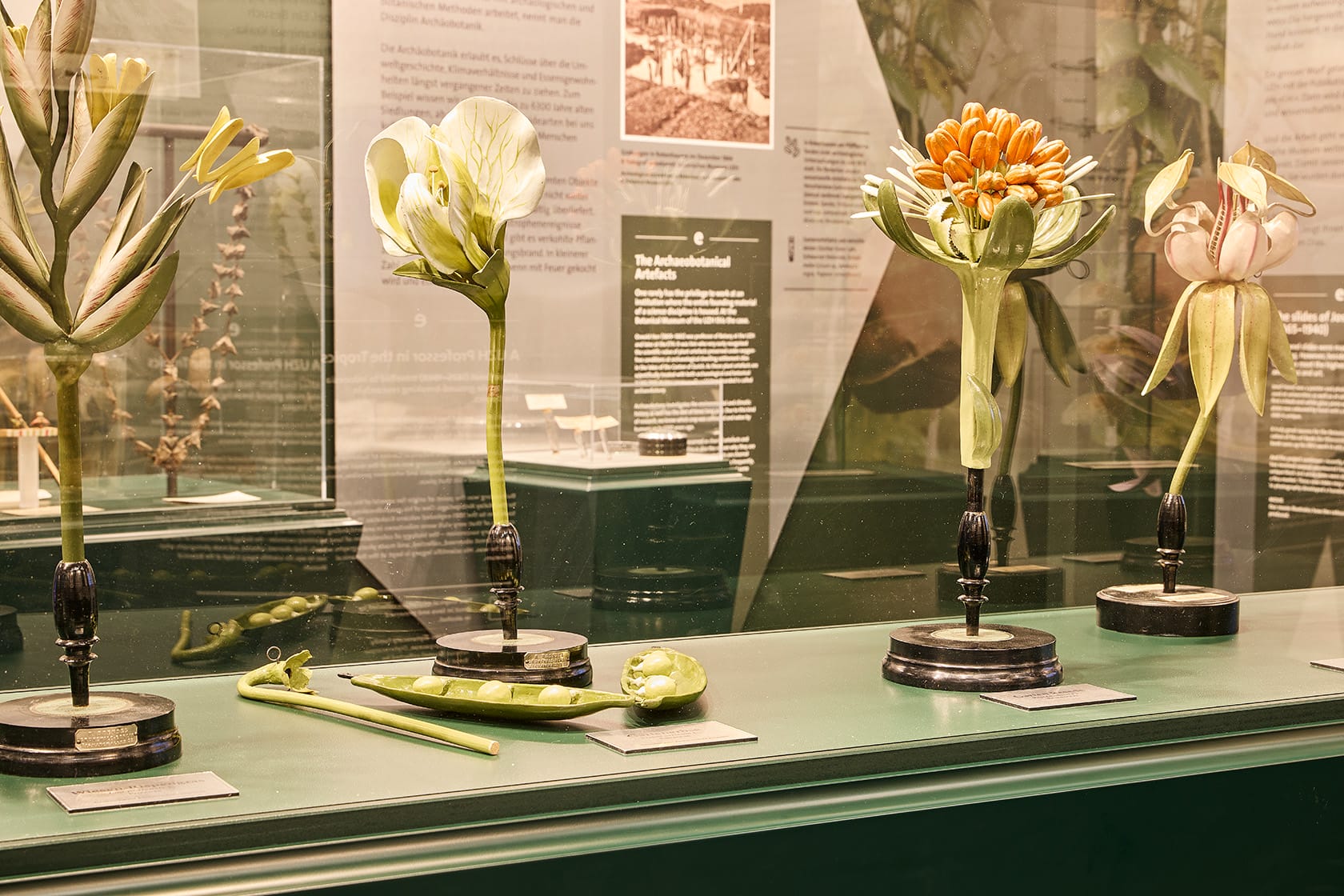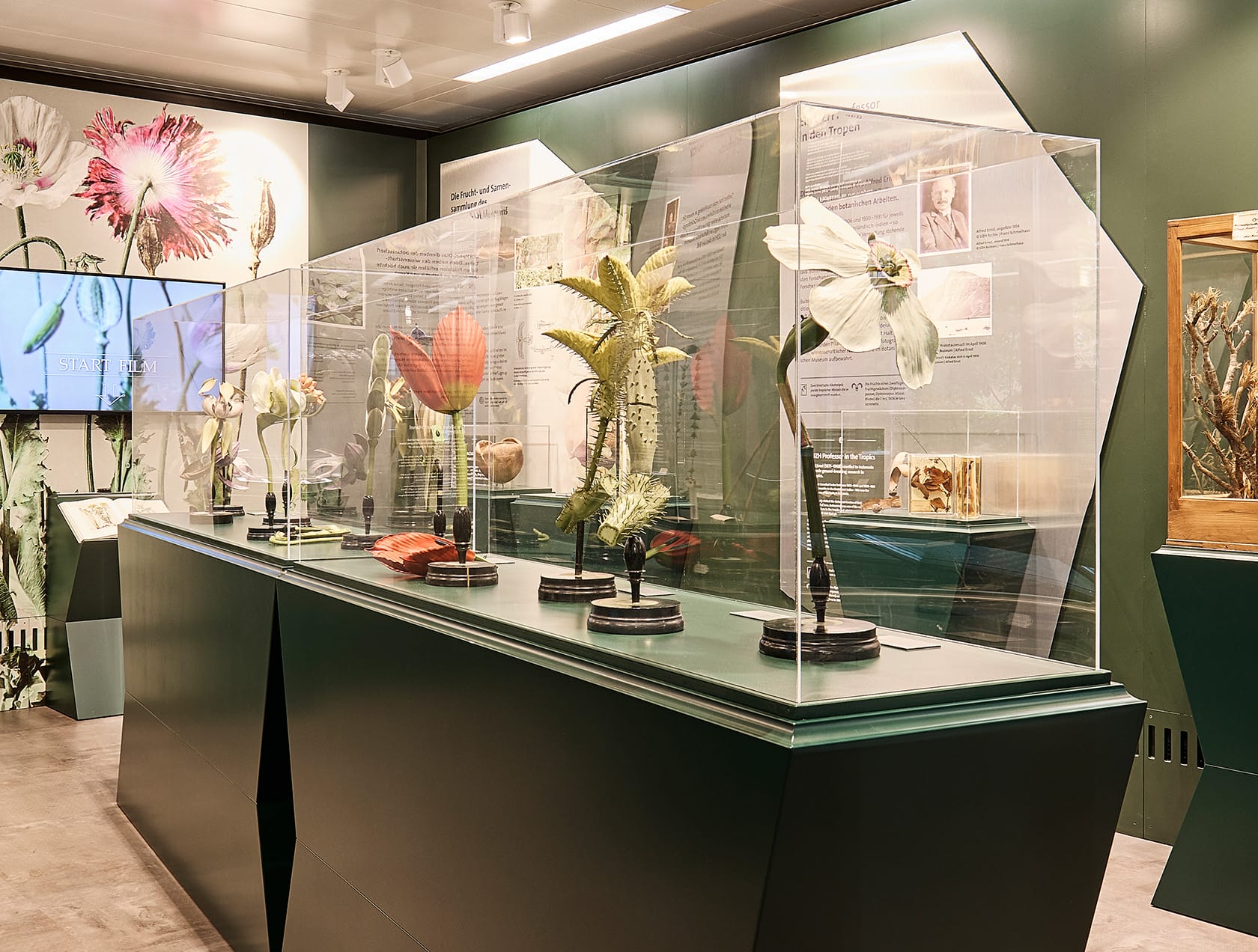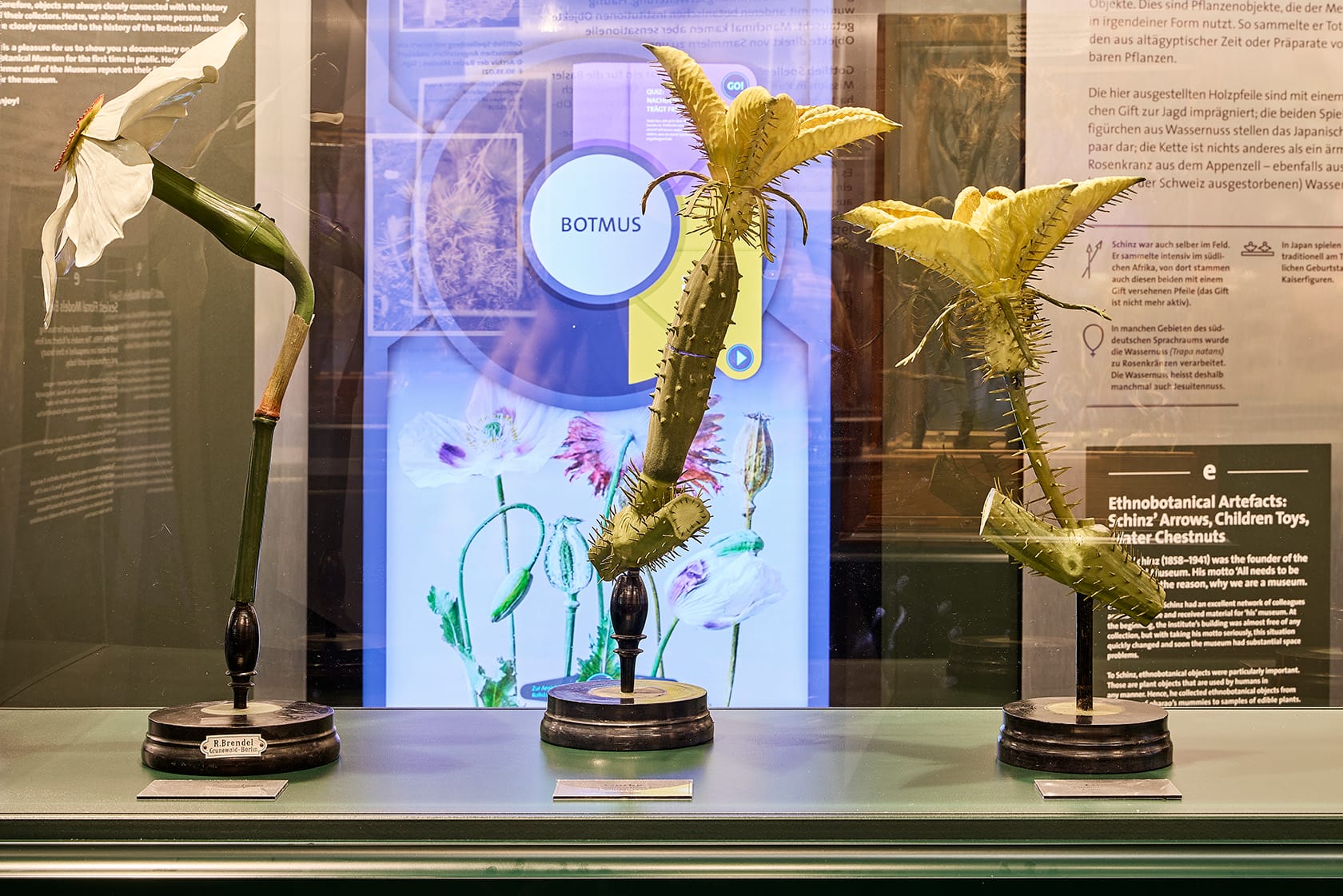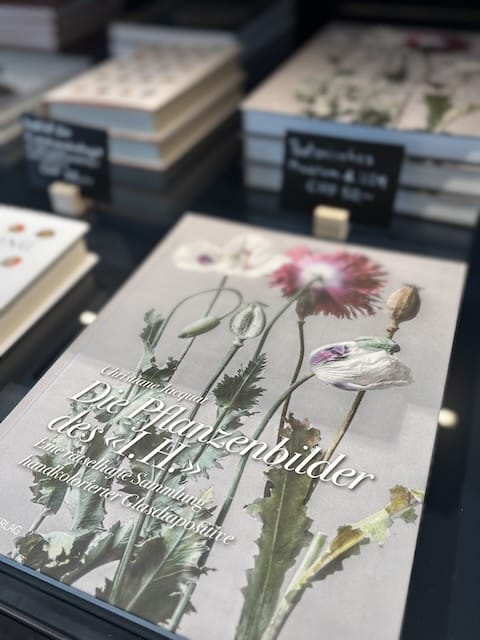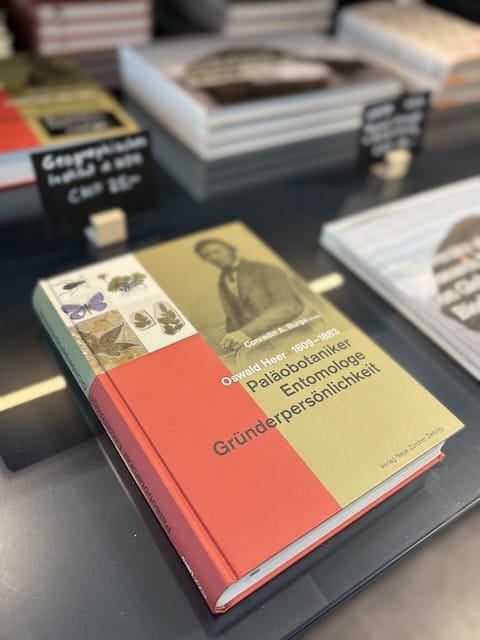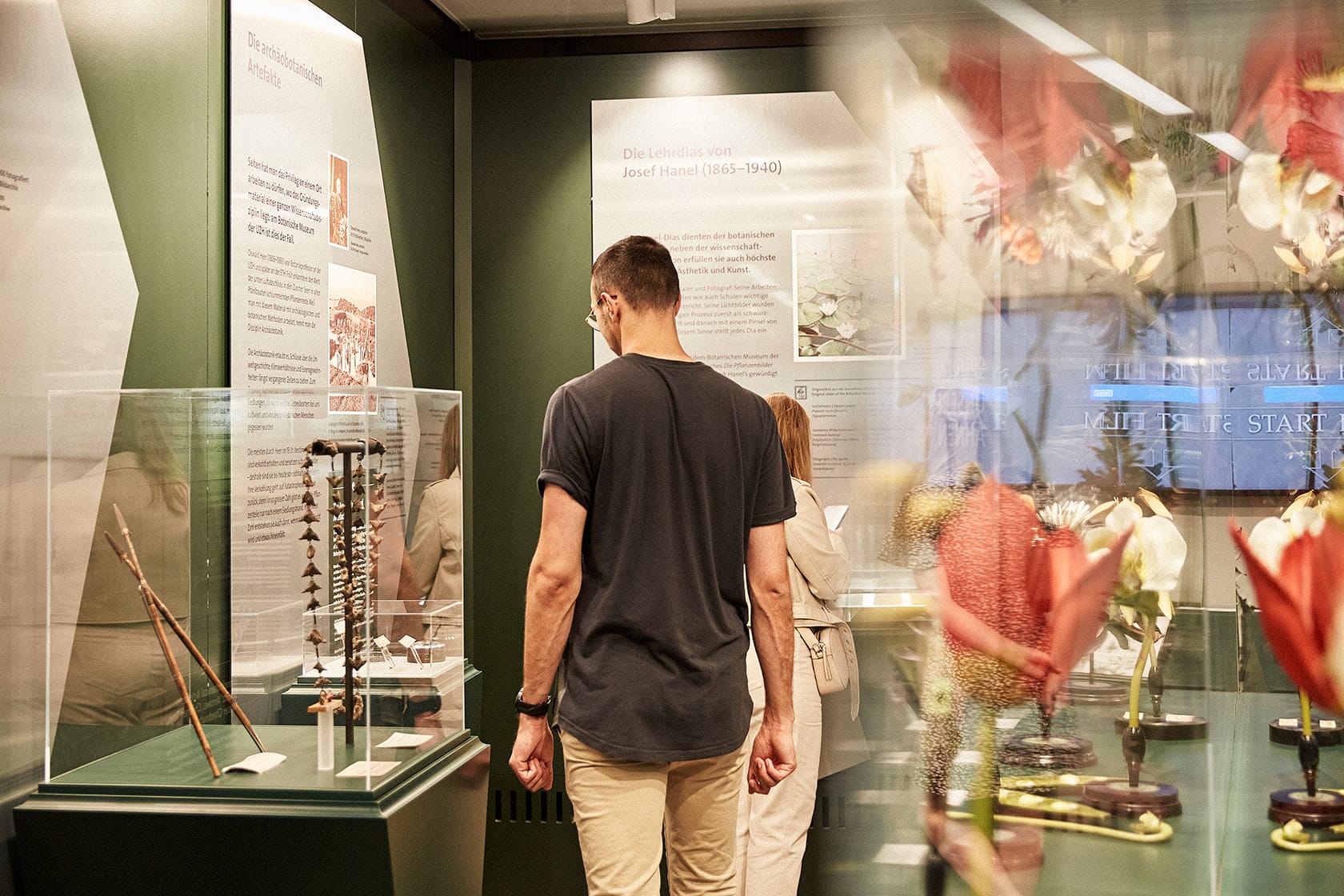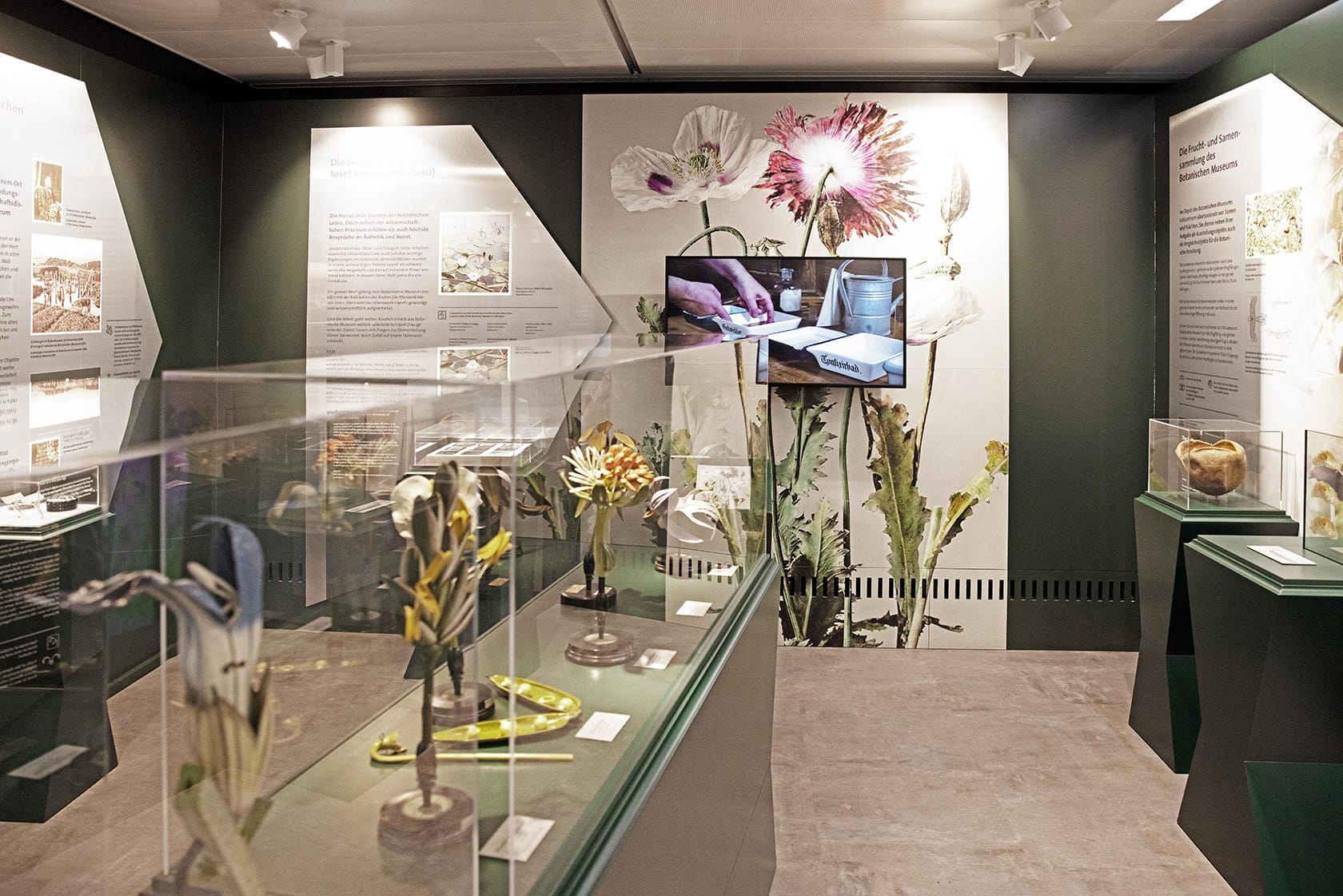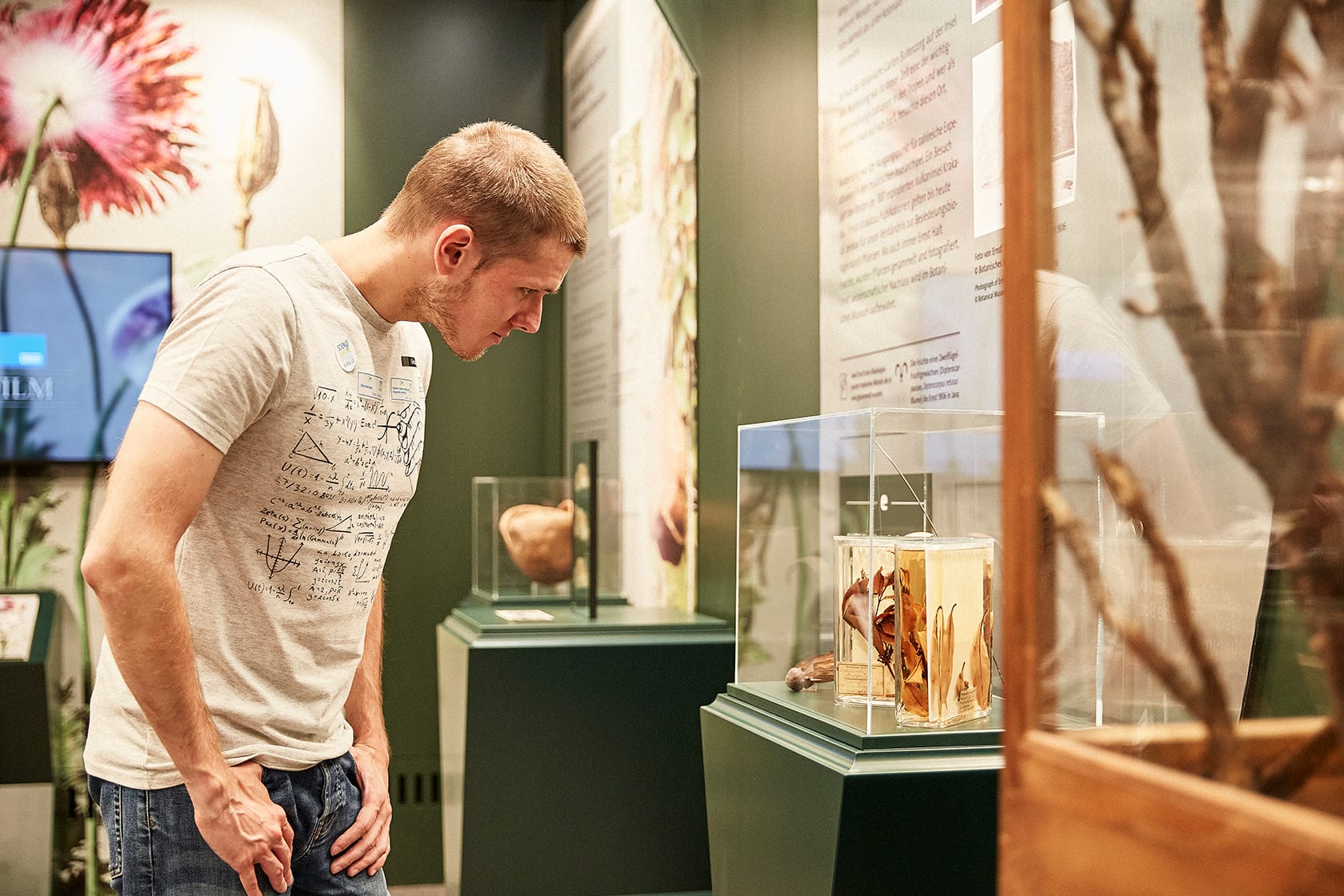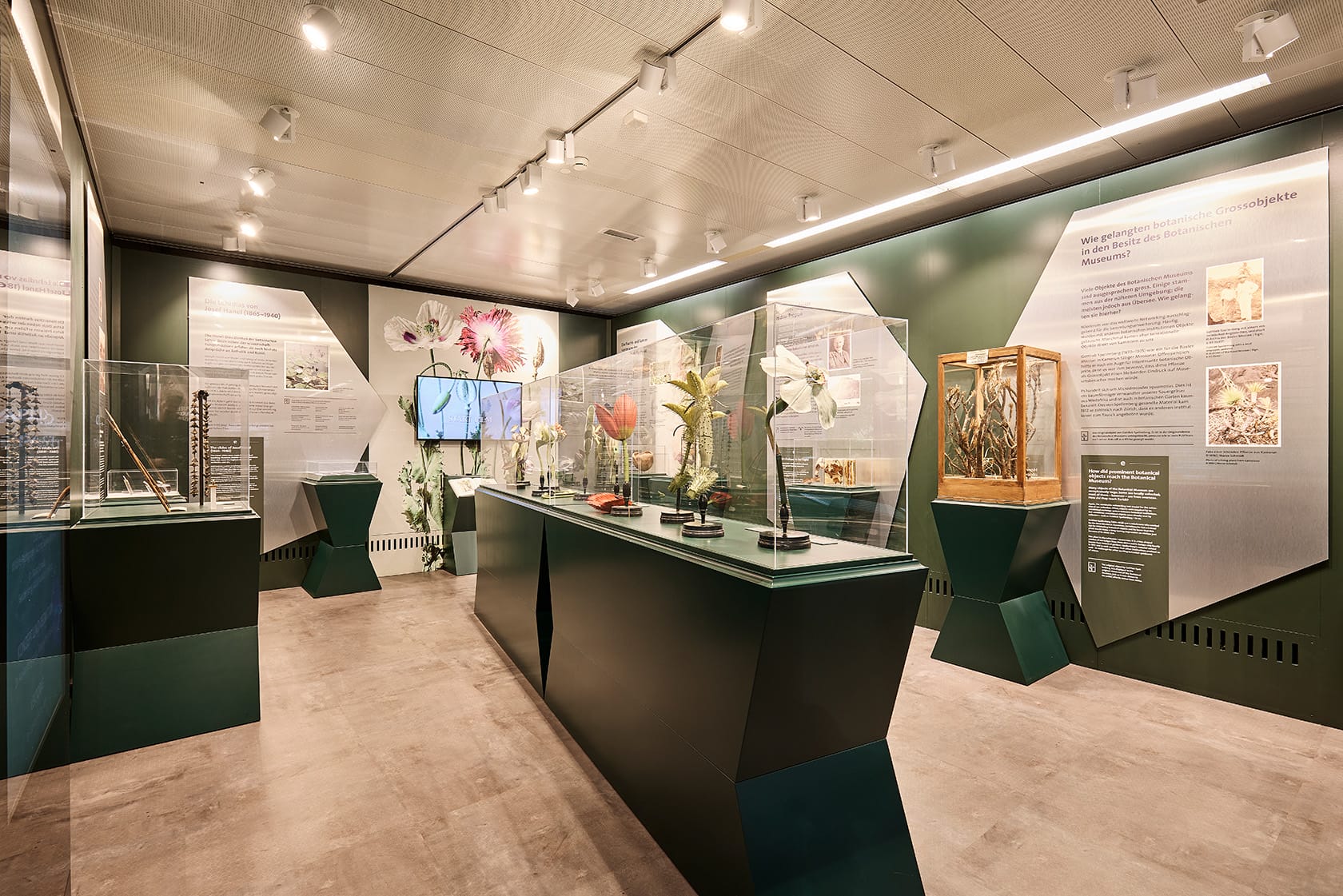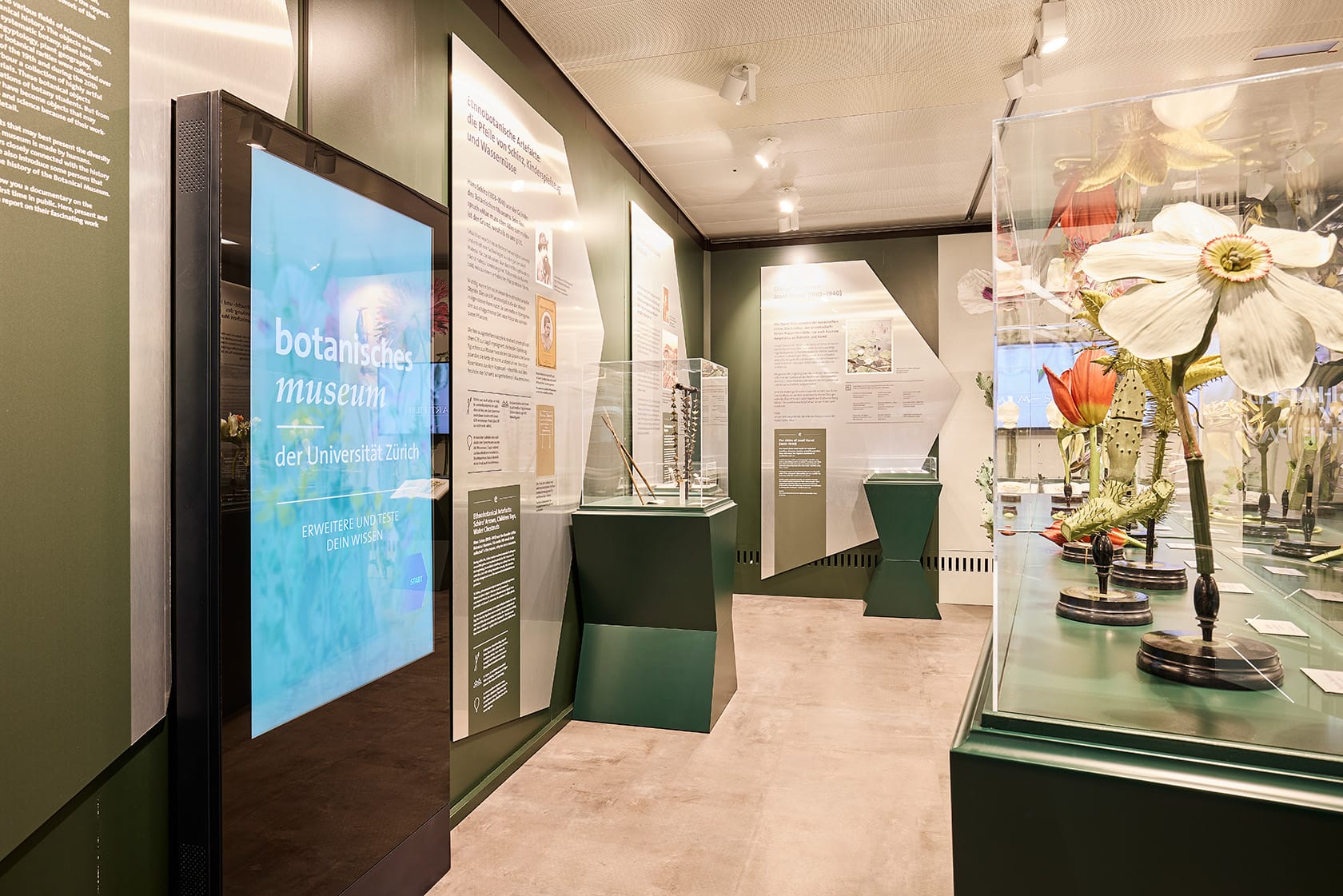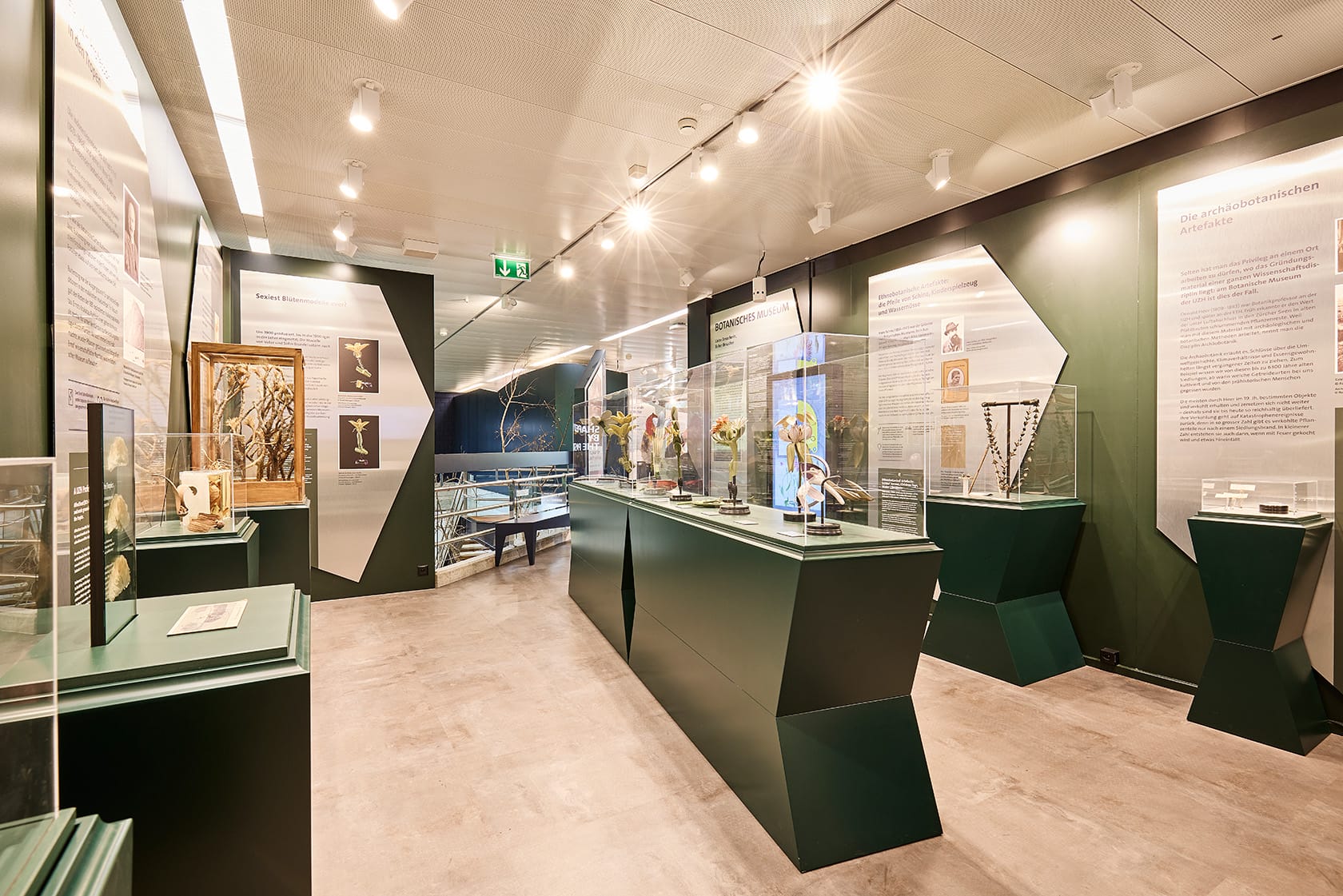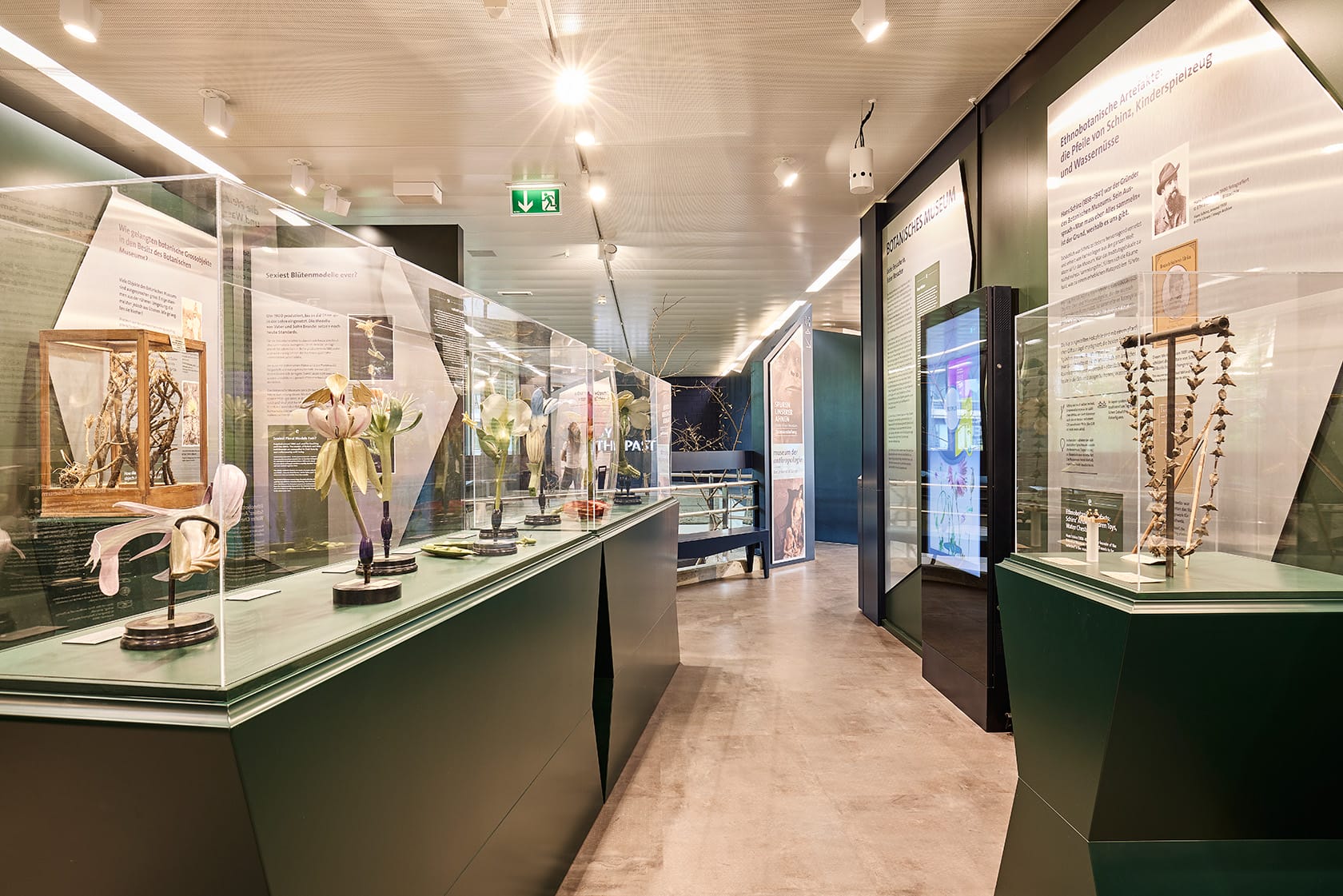Botanical Museum Exhibition
Table of contents
- Dear Visitor
- Ethnobotanical Artefacts: Schinz’ Arrows, Children Toys, Water Chestnuts
- The Archaeobotanical Artefacts
- The slides of Josef Hanel (1865–1940)
- The Fruit- and Seed Collection of the Botanical Museum
- A UZH Professor in the Tropics
- How did prominent botanical objects reach the Botanical Museum?
- Sexiest Floral Models Ever?
- Books related to the exhibition in our museums shop
- Impressions from the exhibition in the Science Pavilion UZH
Dear Visitor
[Original text from the exhibition]
The Botanical Museum of the UZH exists since 1895. At the beginning, it was housed in the Old Botanical Garden of the UZH right in the middle of Zurich. Today, it is located in premises of the Department of Plant and Microbial Biology on the campus of the New Botanical Garden. We are a museum without a museum as we lack exhibition facilities! For this reason, we are grateful to the Faculty of Science for giving us the opportunity to design an exhibition within the framework of the Science Pavilion UZH.
Our collection objects belong to various fields of science; however, all these objects have a botanical history. The objects are treasures of plant anatomy, systematic botany, plant biology, paleo- and archaeobotany, egyptology, plant geography, and ethnobotany. Most of our botanical rarities were collected over the entire globe at the end of the 19th and during the 20th century. In addition, we harbour a collection of highly artful historical educational materials. These botanical objects were shown to many generations of botany students. But from the today’s perspective they have become objects that may well be placed between arts and science because of their workmanship and attention to detail.
We have chosen some objects that may best present the diversity of the Botanical Museum. A museum is made by humans. Therefore, objects are always closely connected with the history of their collectors. Hence, we also introduce some persons that are closely connected to the history of the Botanical Museum.
It is a pleasure for us to show you a documentary on the Botanical Museum for the first time in public. Here, present and former staff of the Museum report on their fascinating work for the museum.
Enjoy!
Botanical Collection
Collection and research of the Botanical Museum. Video is in German.
Ethnobotanical Artefacts: Schinz’ Arrows, Children Toys, Water Chestnuts
Hans Schinz (1858–1941) was the founder of the Botanical Museum. His motto ‘All needs to be collected’ is the reason, why we are a museum.
During all his life, Schinz had an excellent network of colleagues around the globe and received material for ‘his’ museum. At the beginning, the institute’s building was almost free of any collection, but with taking his motto seriously, this situation quickly changed and soon the museum had substantial space problems.
To Schinz, ethnobotanical objects were particularly important. Those are plant objects that are used by humans in any manner. Hence, he collected ethnobotanical objects from garlandes of pharao’s mummies to samples of edible plants.
The here presented arrows are coated with plant toxins for hunting; the two toy figurines are carved out of water chestnut and represent the Japanese emperor couple; the necklace is nothing else than a simple rosary from the Appenzell – likewise made from water chestnut – a plant that is now extinct in Switzerland.
_______Exhibit_______
|
|
____________________________ Schinz was also attending expeditions. Most of his collections are from Southern Africa. From there, he brought back the poisoned arrows (the poison is inactive nowadays). |
|
|
In Japan, in traditional household kids are playing with emperor’s figurines on the emperor’s birthday. |
|
|
In some southern German areas, the water chestnut (Trapa natans) is carved into a rosary. Therefore, the water chestnut is called ‘Jesuit nut’ in some regions. |
======= ======= ======= ======= ======= ======= ======= ======= =======
The Archaeobotanical Artefacts
One rarely has the privilege to work at an institution where the entire founding material of a science discipline is housed. At the Botanical Museum of the UZH this the case.
Oswald Herr (1809–1883) was professor of Botany at the UZH and later at the ETH. It was him who very early recognized the scientific value of plant artefacts preserved under oxygen-free conditions at archaeological dwelling settlement sites in the lakes of the Canton of Zurich. As these plant artefacts are scientifically treated with both archaeological and botanical methods, the field of science Oswald Heer founded is called archaeobotany.
Archaeobotany investigates the environmental and climatic history as well has the diet of times long past. Due to this kind of research, we know which crop was cultivated and eaten by humans up to 6300 years ago.
Most of Heer’s objects are preserved as charred artefacts and therefore do not degrade. This is also the reason why they are found in large numbers. Most of these artefacts are charred because settlements were destroyed by fires. Less frequently, charred artefacts are found when food was cooked and some objects fell into the cooking fire.
_______Exhibit_______
|
|
____________________________ In Robenhausen at the lake of Pfäffikon, archaeological digging was started in 1858 and sensational artefacts were recovered. Artefacts of various cereals (historical identification: Club Wheat, Emmer, Barley; Triticum aestivum ssp. compactum, Triticum dicoccum, Hordeum sp.). |
|
|
Plant artefacts from various lakes of the Canton of Zurich: flax, elder, opium poppy (Linum sp., Sambucus nigra, Papaver somniferum). |
======= ======= ======= ======= ======= ======= ======= ======= =======
The slides of Josef Hanel (1865–1940)
|
White Nenuphar | Nymphaea alba L. |
The Hanel slides were made for botanical teaching. However, besides scientific precision they also meet the highest standards of aesthetics and art. |
Josef Hanel was a painter and photographer. His slides were used at universities as well as at schools. To produce such slides, first a black-and-white glass plate was produced and then the plate was coloured by hand with a fine brush. Therefore, every slide is unique
A truly great success for the Botanical Museum was the publication of the art book Die Pflanzenbilder des «I.H.» in 2019. This book sums up his life’s work in arts and science.
And the project continues: recently, the Botanical Museum has received several uncoloured Hanel slides as a gift. These unique black and white slides were discovered by chance at a flea market. These new slides may reveal some new techniques in photography developed a hundred years ago.
Our movie illustrates how the coloured Hanel slides were produced.
_______Exhibit_______
|
Opium poppy |
Pea |
Pale-yellow iris |
| Common haircap Polytrichum commune Hedw. Polytrichaceae |
Wood horsetail Equisetum sylvaticum L. Equisetaceae |
Male fern Dryopteris filix-mas (L.) Schott Dryopteridaceae |
| Fly agaric Amanita muscaria (L.) Lam. Amanitaceae |
Porcino Boletus edulis Bull. Boletaceae |
unstained Porcino slide |
======= ======= ======= ======= ======= ======= ======= ======= =======
The Fruit- and Seed Collection of the Botanical Museum
The Botanical Museums’s depot harbours thousands of fruits- and seeds. Besides their function as exhibition objects, they are also important for comparative botanical research.
The seeds of Alsomitra macrocarpa – also Javan cucumber – are the largest seeds that are capable to fly. They have the gigantic diameter of 15cm. However, they weigh only just 0.2g.
The seeds of this squash related liana that climbs up giant trees in South-East Asian tropical rainforests ripen in a large capsule and are released through a triangular opening.
Our seeds are for more than a century in the collection of the Botanical Museum, but still they are perfectly able to fly and glide smoothly to the ground. The seed’s shape inspired early airplane constructers to design a ‘flying wing’ aircraft.
_______Exhibit_______
|
|
____________________________ Seeds of the Javan cucumber. |
|
|
One of the first version of a ‚flying wing‘ aircraft. © Dingler’s Polytechnisches Journal 1909 |
|
|
The ripe fruit of the Javan cucumber. It is unfolded and contains several hundred seeds. |
======= ======= ======= ======= ======= ======= ======= ======= =======
A UZH Professor in the Tropics
Die Indonesienreisen des Alfred Ernst (1875–1968) und seine in ihrer Zeit wegweisenden botanischen Arbeiten.
Alfred Ernst travelled twice between 1905–1906 and 1930–1931 for several months to the Dutch East Indies – this was the colonial name of the today’s Indonesia.
He extensively visited the Botanical Garden of Buitenzorg on the island of Java. Buitenzorg was one of the most important research stations in the tropics and whenever possible, every botanist would visit that place.
Buitenzorg was the point of origin for several of his expeditions to the Malay Archipelago. One of his groundbreaking journeys took him to the 1881 exploded volcano Krakatau. The Ernst’ publications of that very visit were milestones in understanding of primary succession – the biology of colonization of land by plants. Ernst observed, collected, and made photographs wherever he was. His scientific legacy is kept at the Botanical Museum.
_______Exhibit_______
|
|
____________________________ Two tropical mistletoes collected by Ernst in Java and preserved in alcohol. |
|
|
Fruits of the dipterocarp family (Dipterocarpaceae, Dipterocarpus retusus Blume) collected by Ernst in Java in 1906. |
======= ======= ======= ======= ======= ======= ======= ======= =======
How did prominent botanical objects reach the Botanical Museum?
Many objects of the Botanical Museum are conspicuously large. Some are locally collected; most of them – however – are from overseas. How did they reach Zurich?
Again, the worldwide networking was crucial for the extension of our collection. Often, objects were acquired by an established exchange system between botanical institutions. But sometimes sensational objects were directly sent by collectors – such as Gottlieb Spellenberg – to us.
Gottlieb Spellenberg (1870–1925) was a missionary who worked for the Basel Mission in Cameroon. Somehow, he had a trained eye for interesting botanical objects and he knew that this plant would make a long-lasting impression on visitors just because of its sheer size.
This plant is Microdracoides squamosus. It is a tree shaped relative of our sedges from West Africa and in Europe only hardly known from botanical gardens. Spellenberg’s material arrived in 1912 and in such numbers that other institutions profited as well – in exchange for other exciting botanical specimens of course.
_______Exponat _______
|
|
____________________________ Original object, a Microdracoides squamosus Hua, from Gottlieb Spellenberg, housed in the original display case of the Botanical Museum, just as it was shown to the public after its arrival from Africa. |
======= ======= ======= ======= ======= ======= ======= ======= =======
Sexiest Floral Models Ever?
Acquired around 1900 and used for teaching until the 1990s. The models of Robert and Reinhold Brendel are unequalled in their beauty and craftsmanship until today. Good botany education – in the past and present – requires demonstrative teaching material. The «R. Brendel, Verlagsanstalt für Lehrmittel» in Berlin produced from 1885 on for about 40 years plant and fungal models in a quality standard that has not been reached anymore since. |
|
The utterly aesthetic flowers are made of papier mâché and lifelike coloured. Most flowers can be taken apart to show characters that are invisible from the outside. The Botanical Museum owns a large Brendel collection. It was used until the late 1990s for botanical teaching. Now, it is one of the core collections of the Botanical museum. A recent permanent loan from the Kantonsschule Küsnacht to the Botanical Museum almost doubled our collection; some of the models are exhibited in the show cases here. |
|
_______Exhibit_______
Table of contents
- Dear Visitor
- Ethnobotanical Artefacts: Schinz’ Arrows, Children Toys, Water Chestnuts
- The Archaeobotanical Artefacts
- The slides of Josef Hanel (1865–1940)
- The Fruit- and Seed Collection of the Botanical Museum
- A UZH Professor in the Tropics
- How did prominent botanical objects reach the Botanical Museum?
- Sexiest Floral Models Ever?
- Books related to the exhibition in our museums shop
- Impressions from the exhibition in the Science Pavilion UZH
